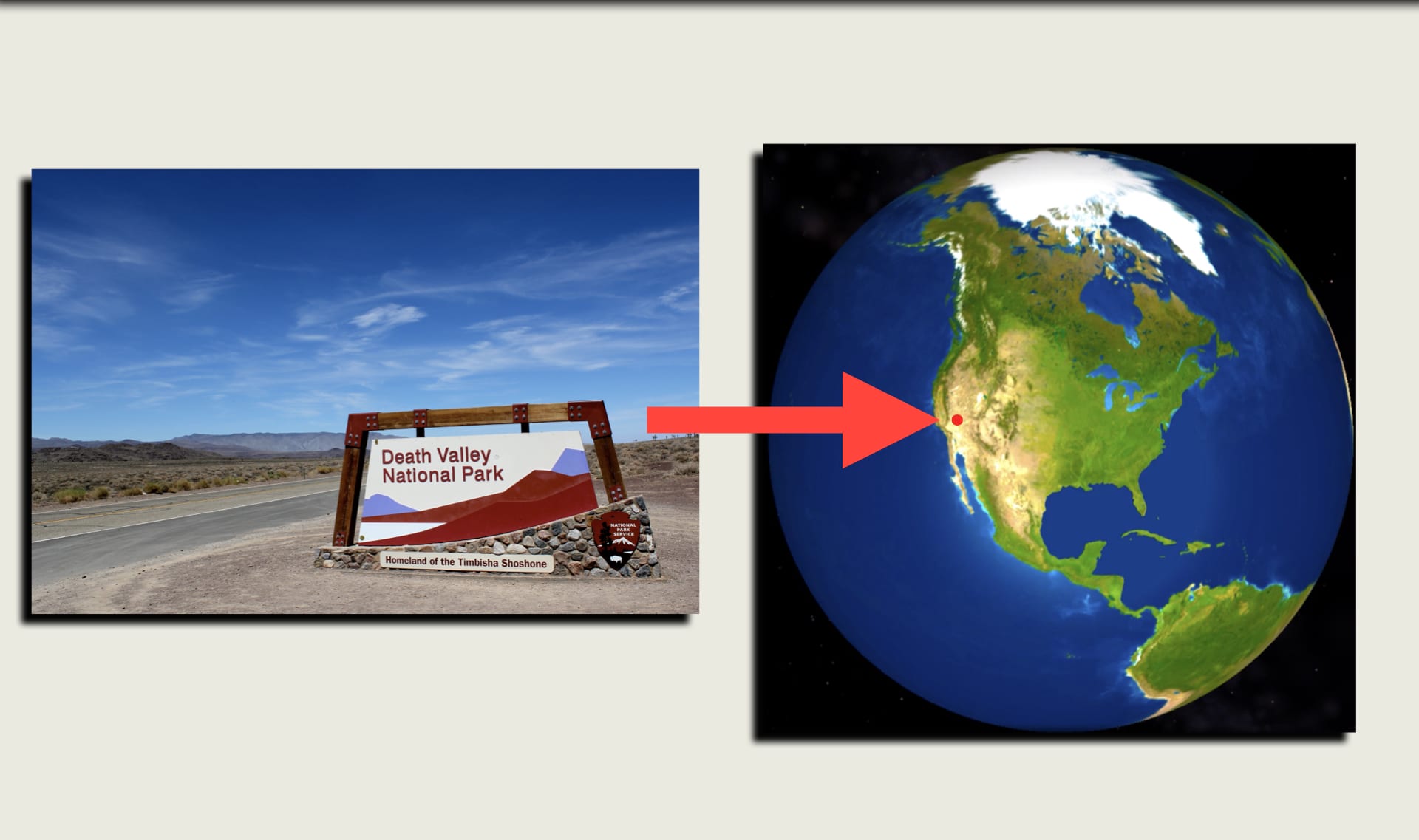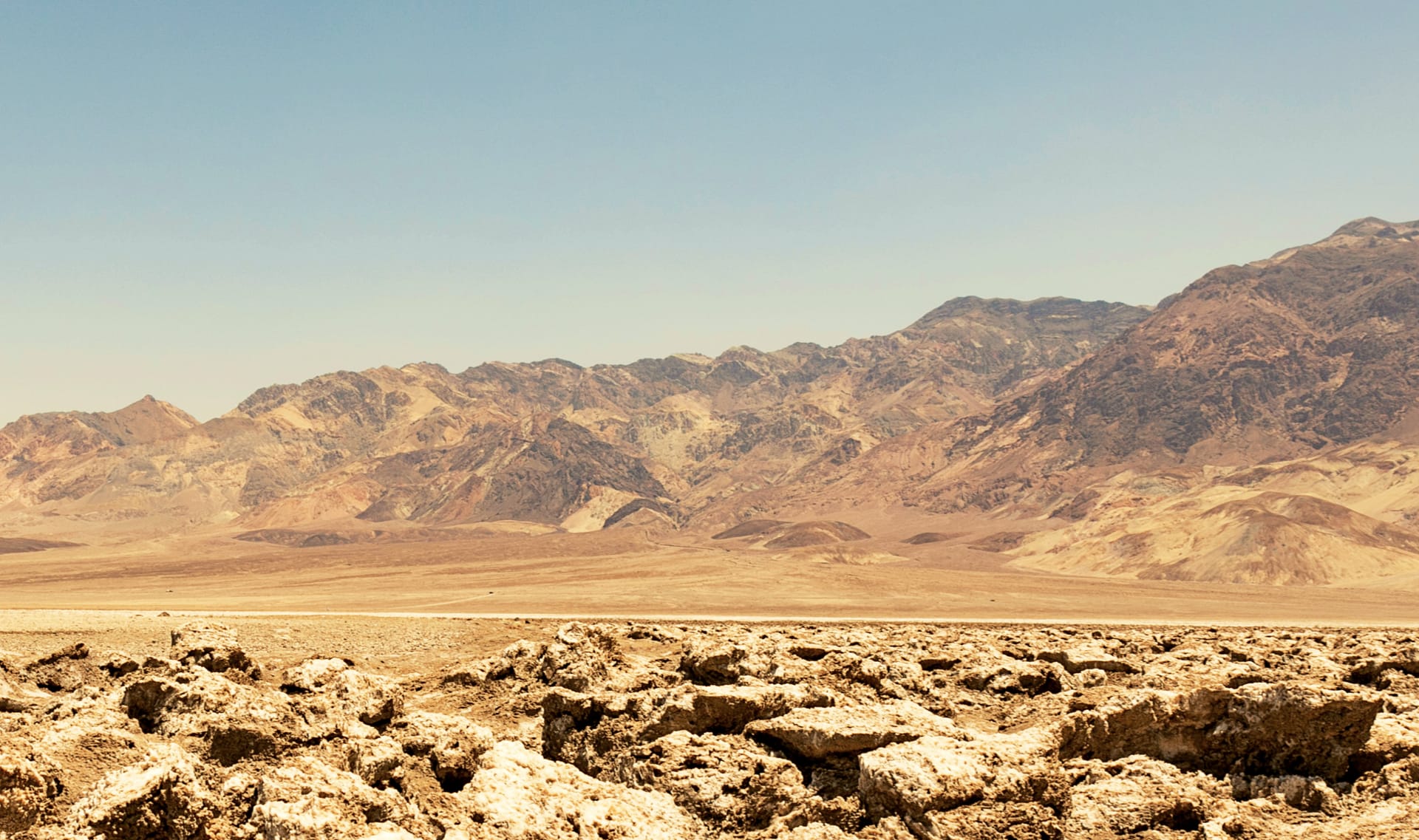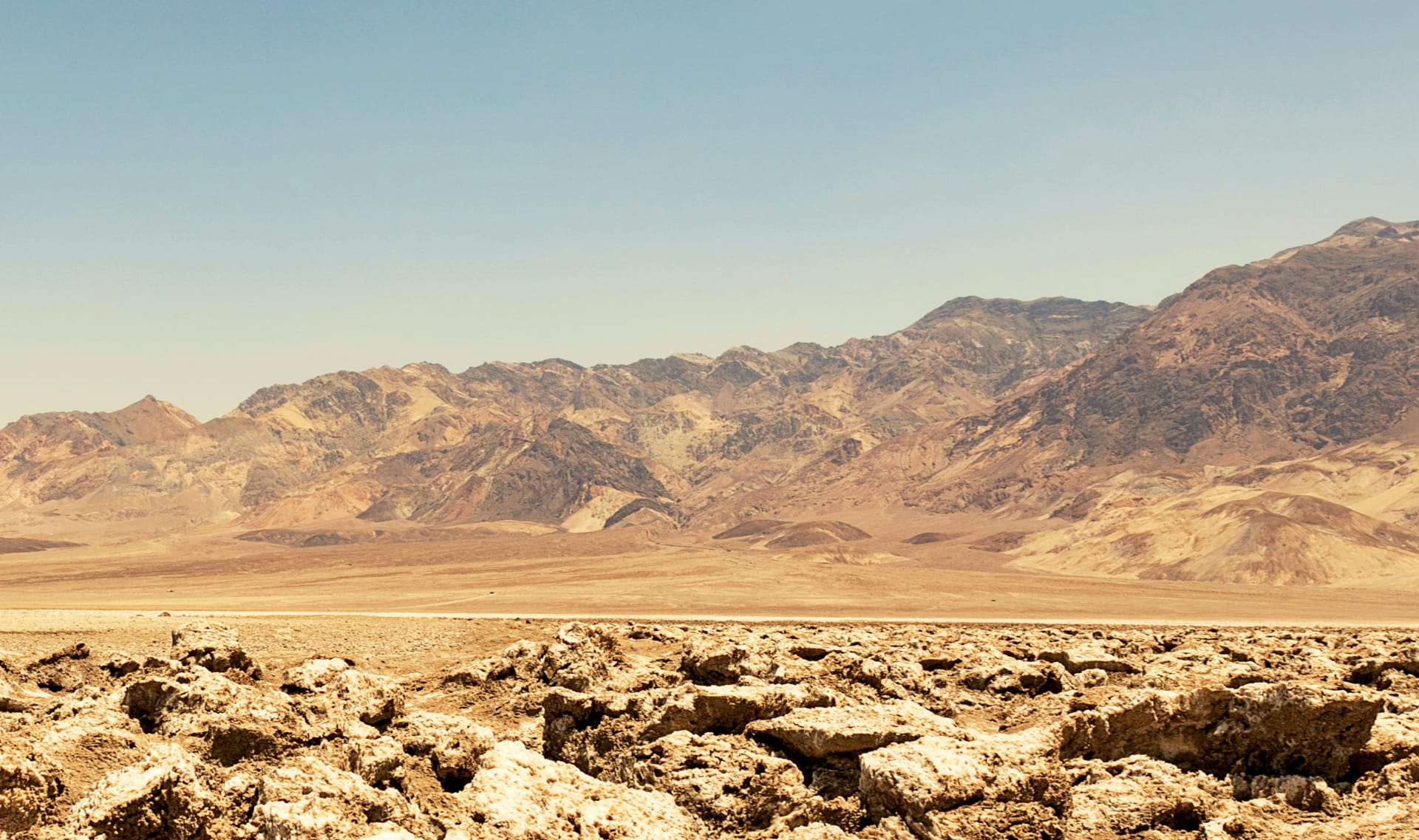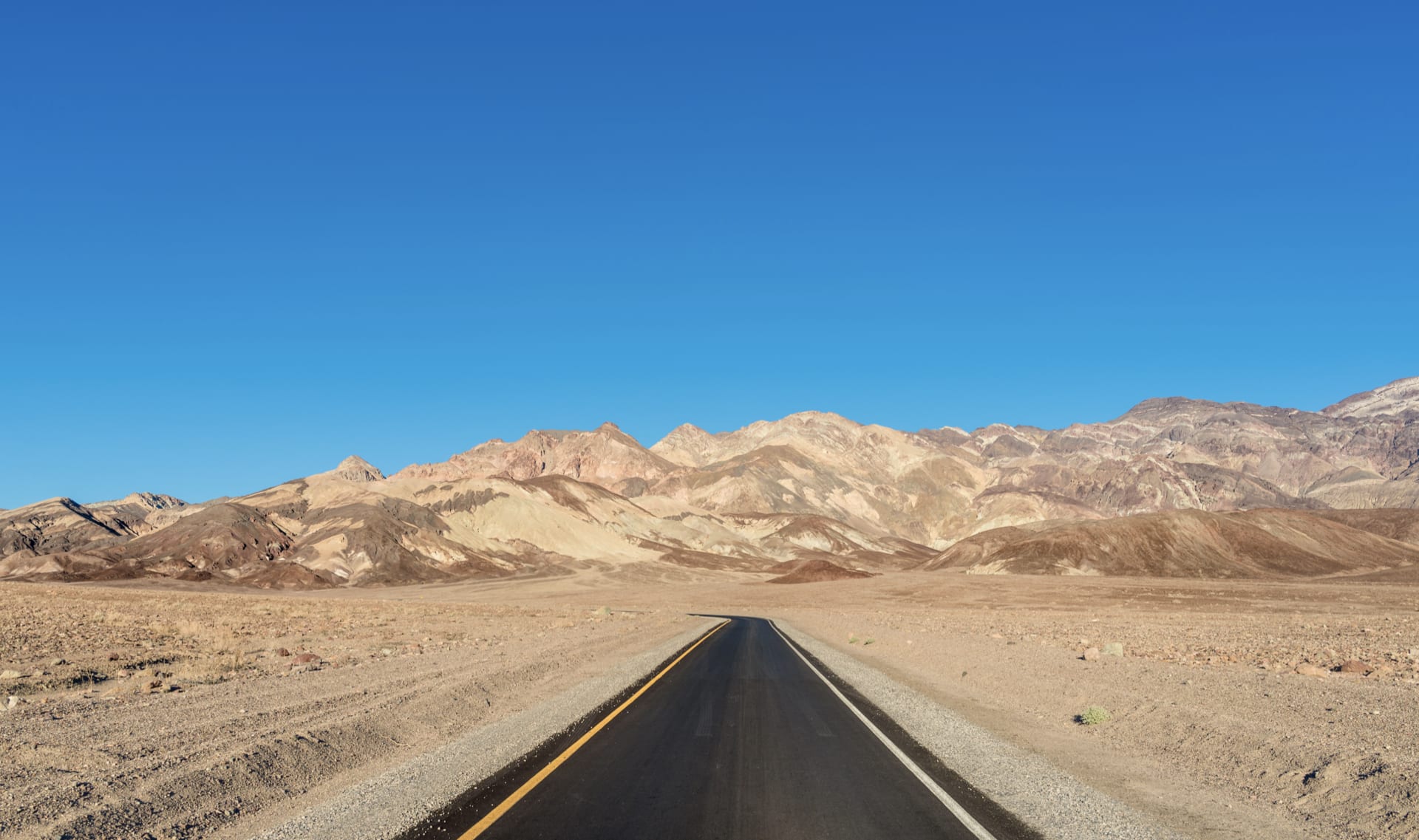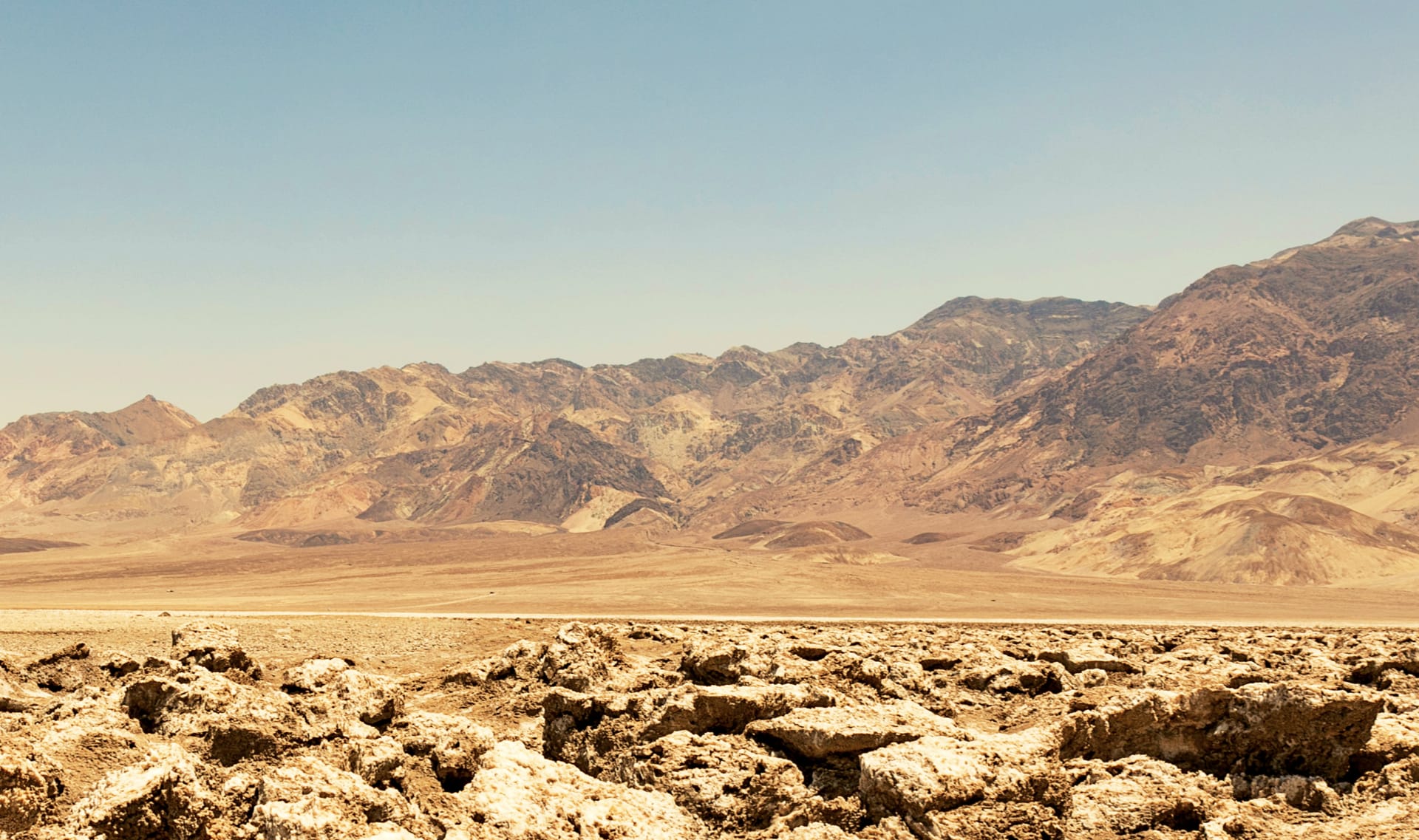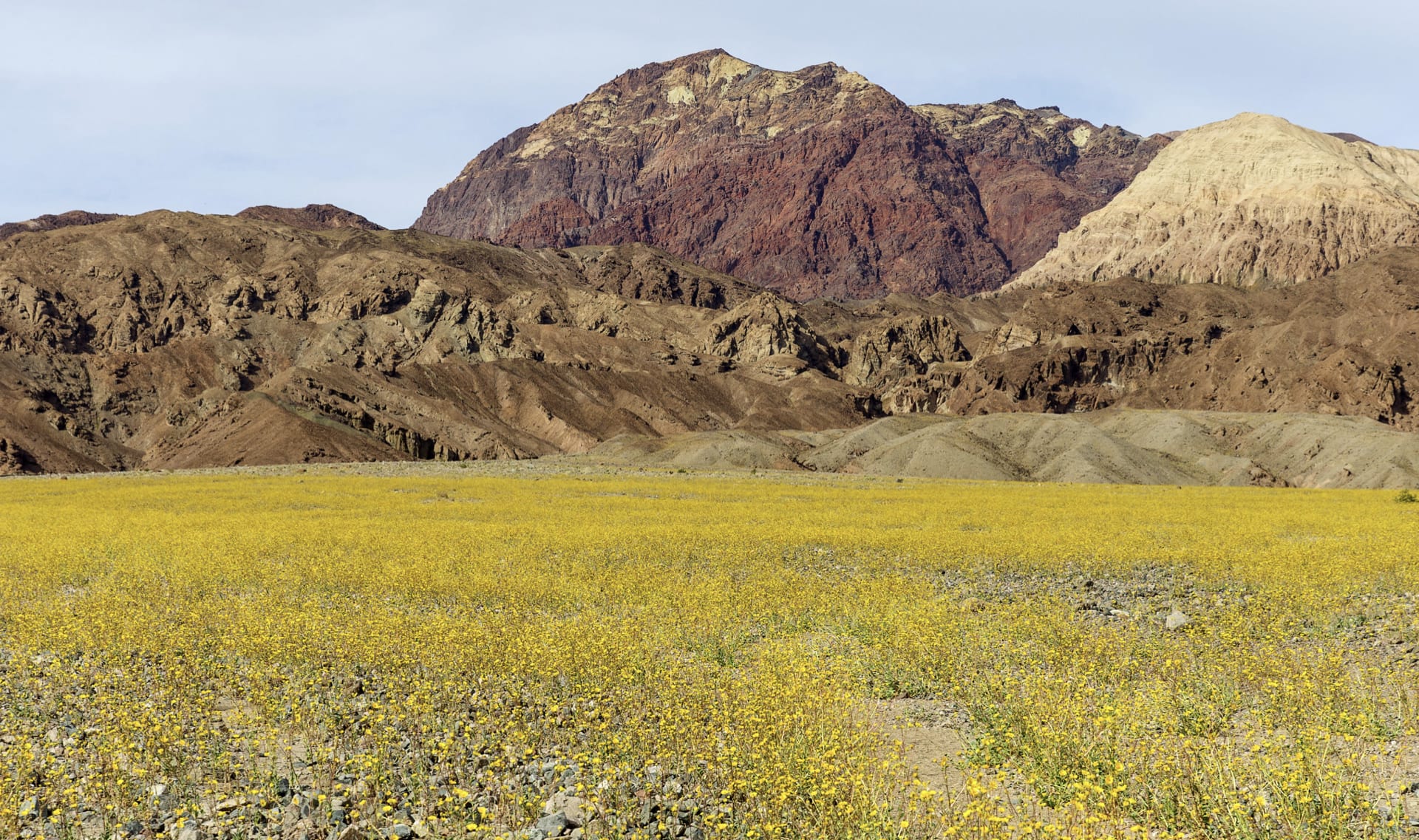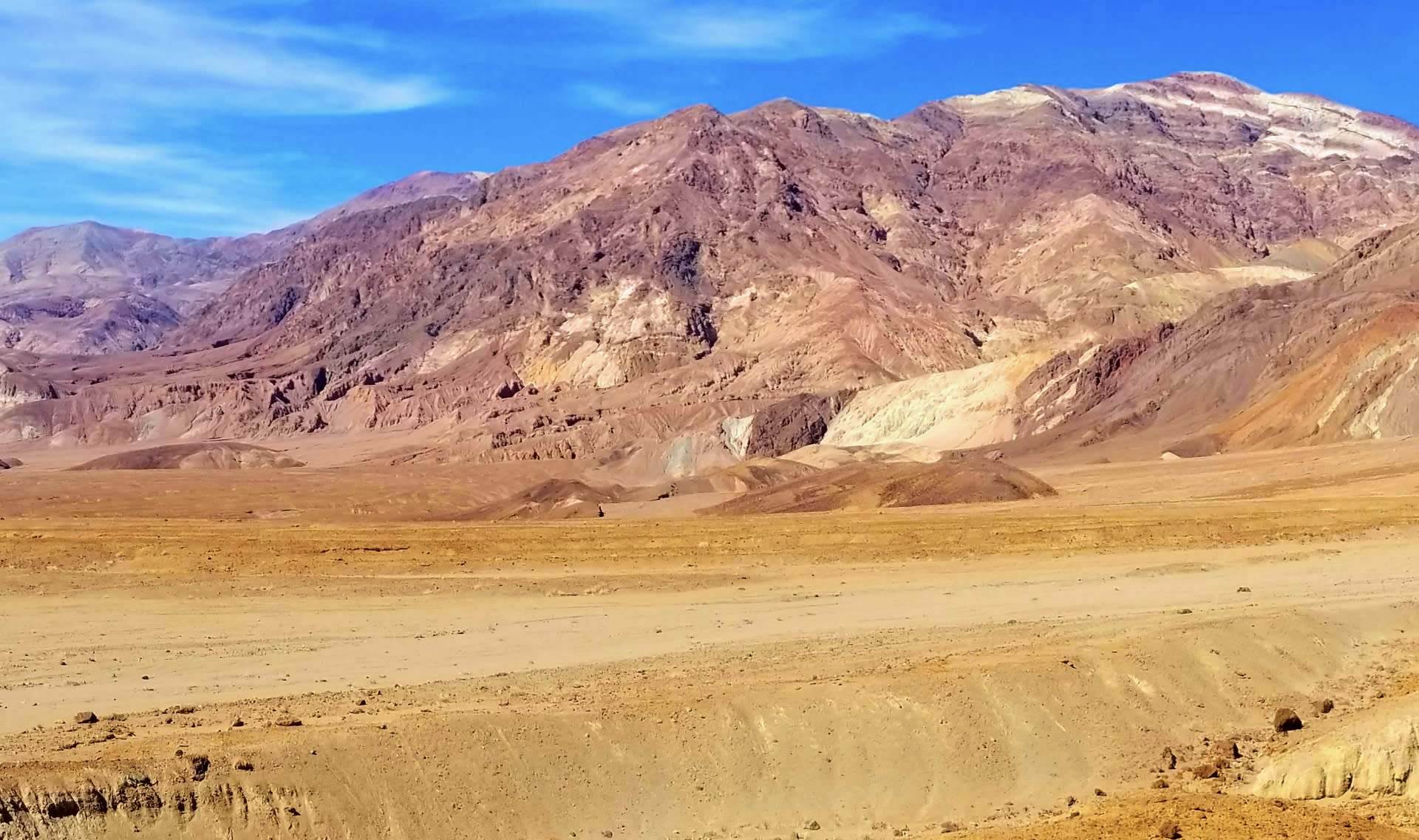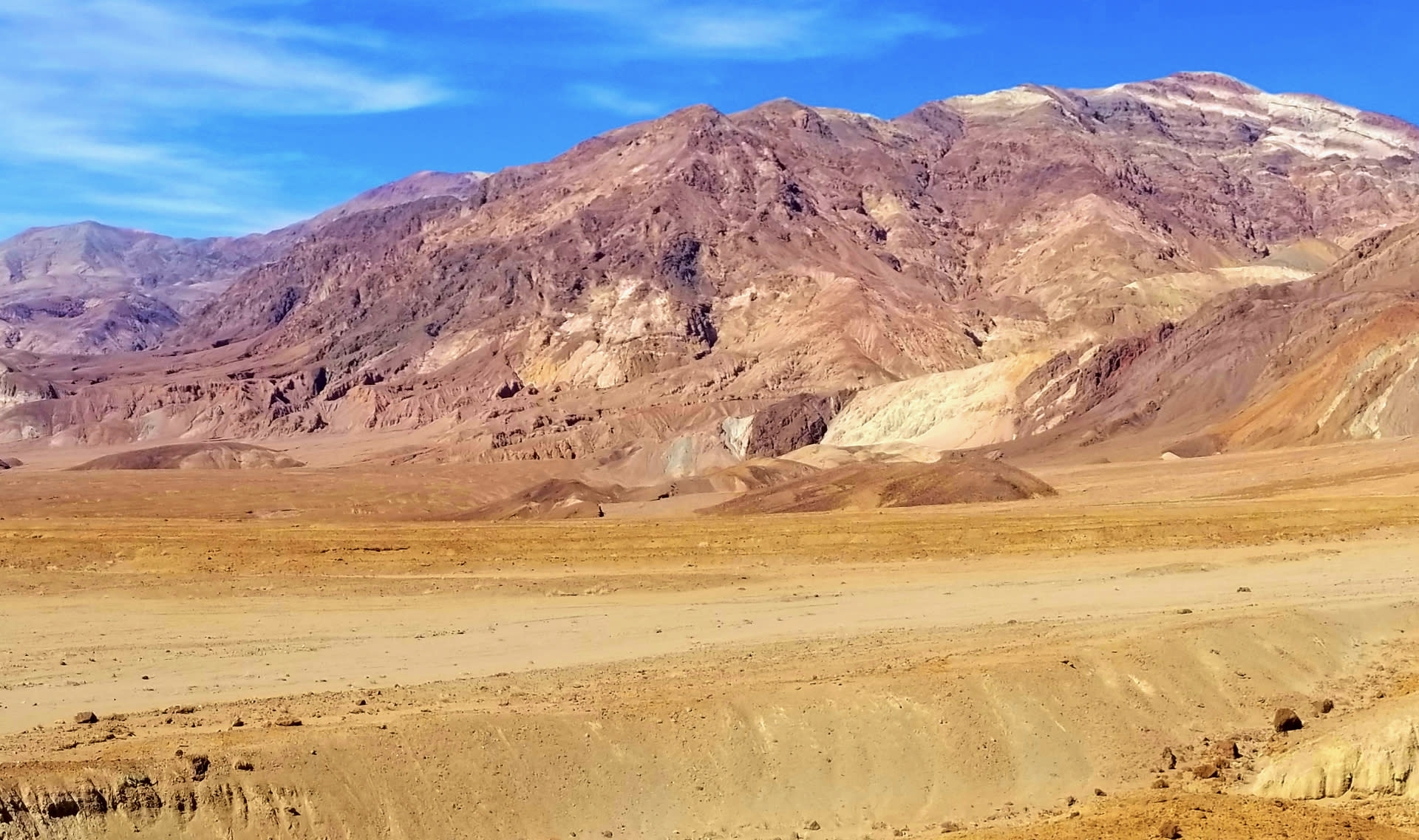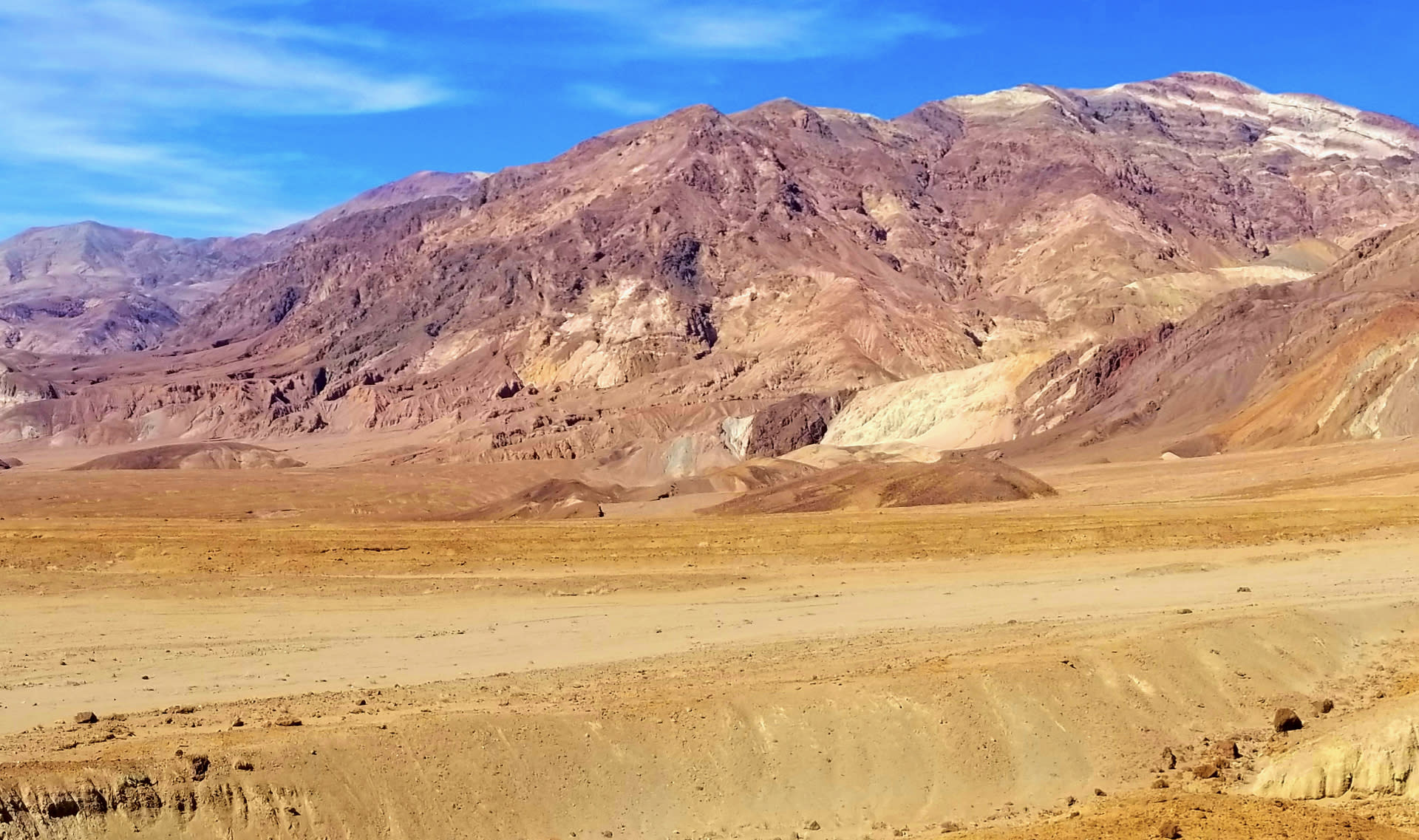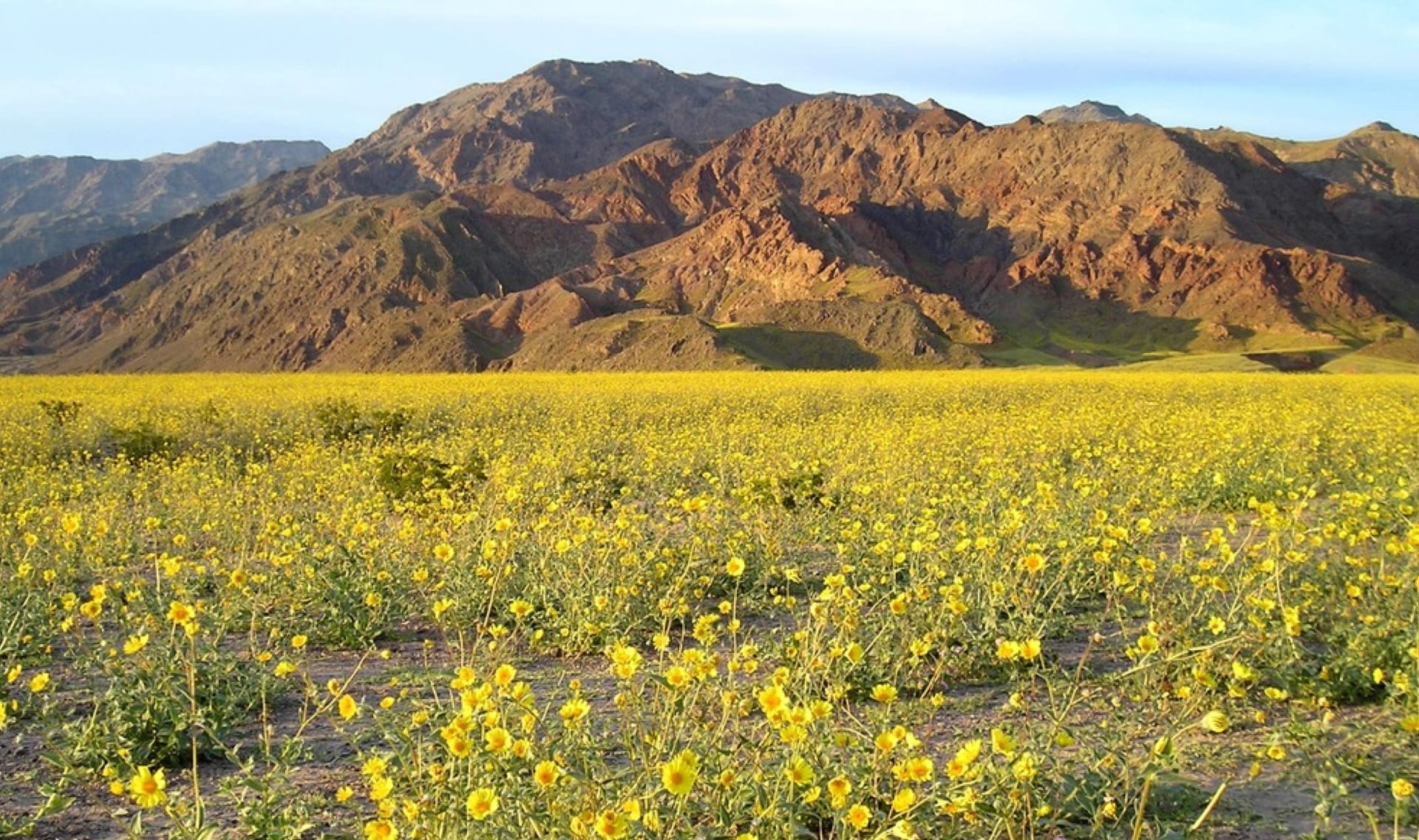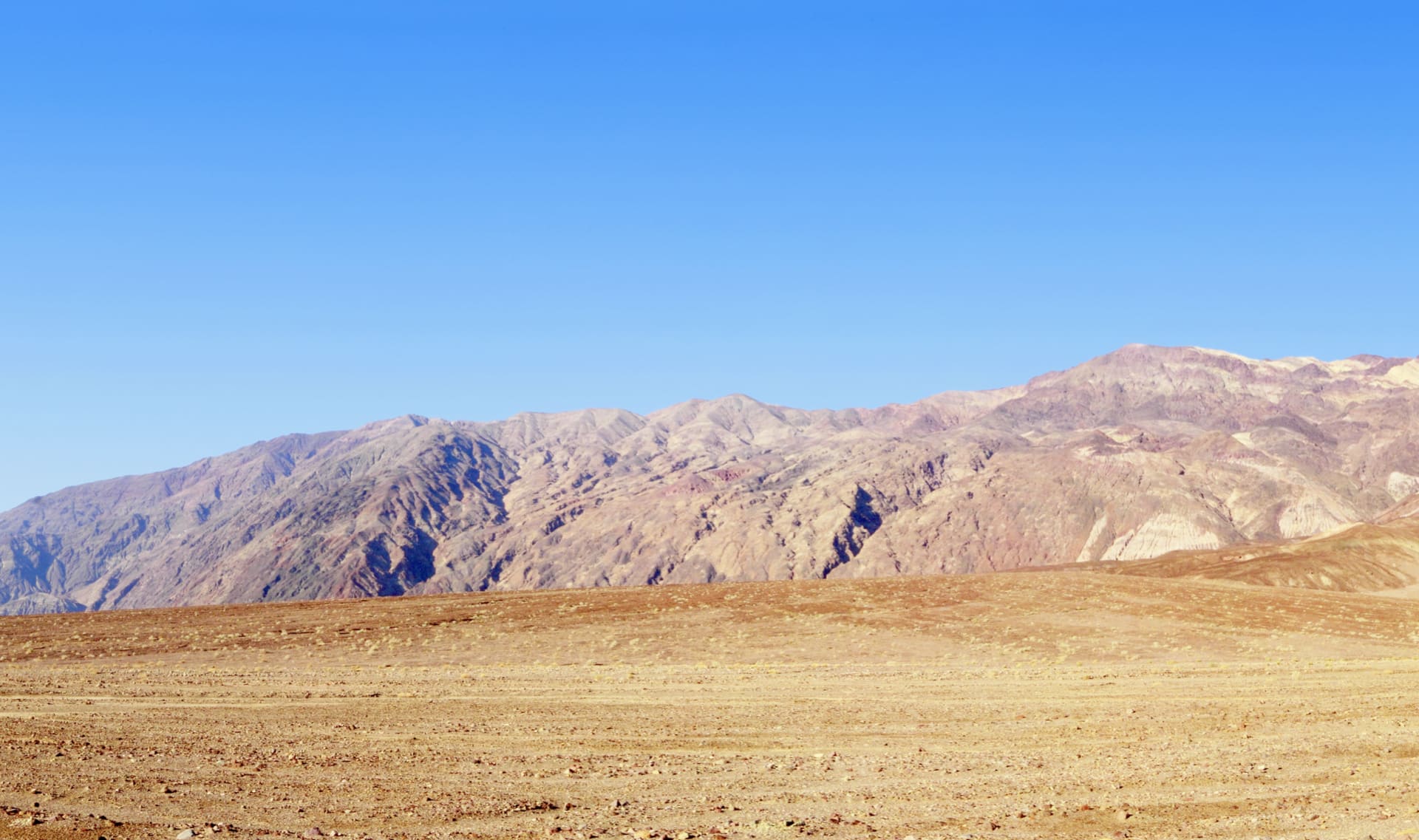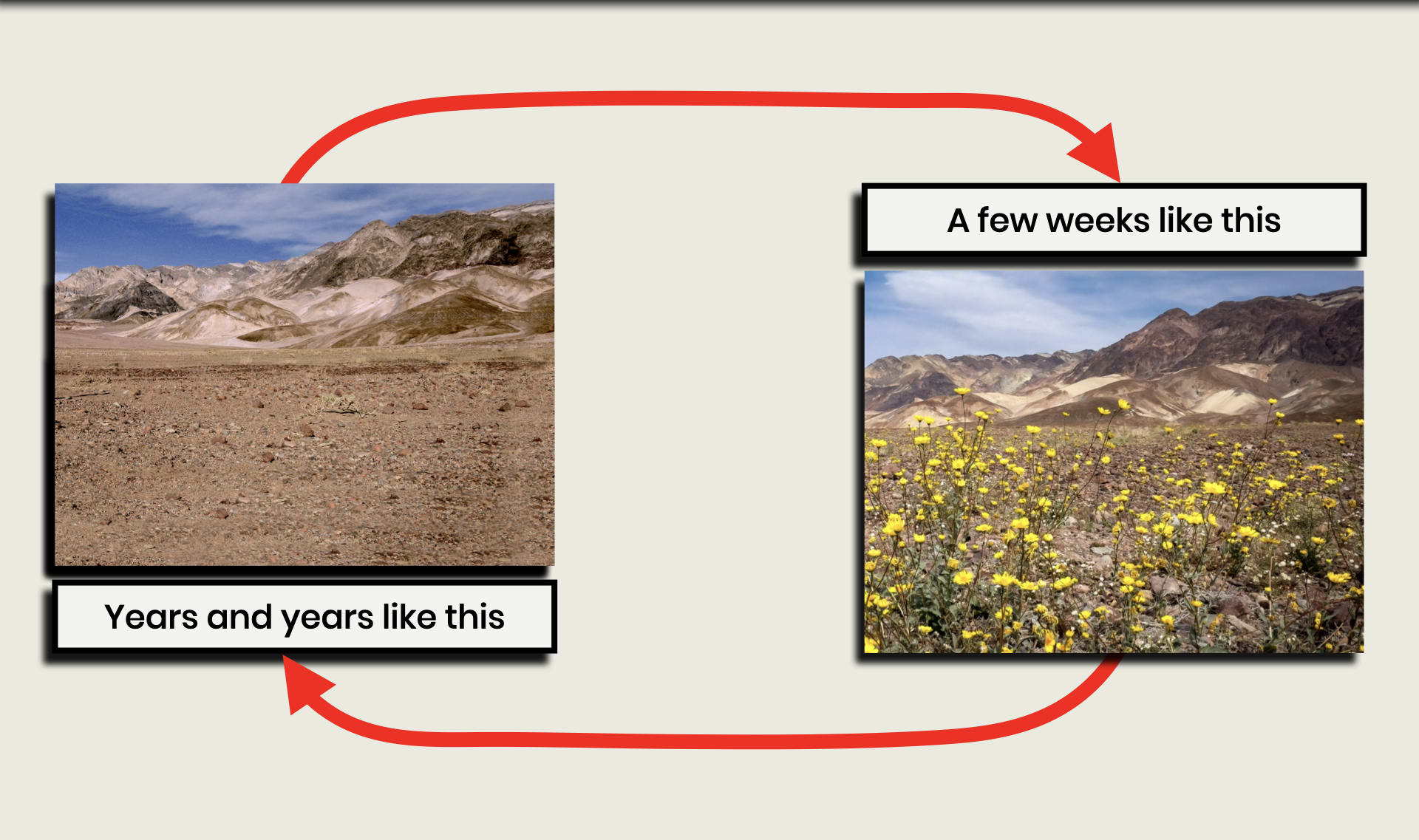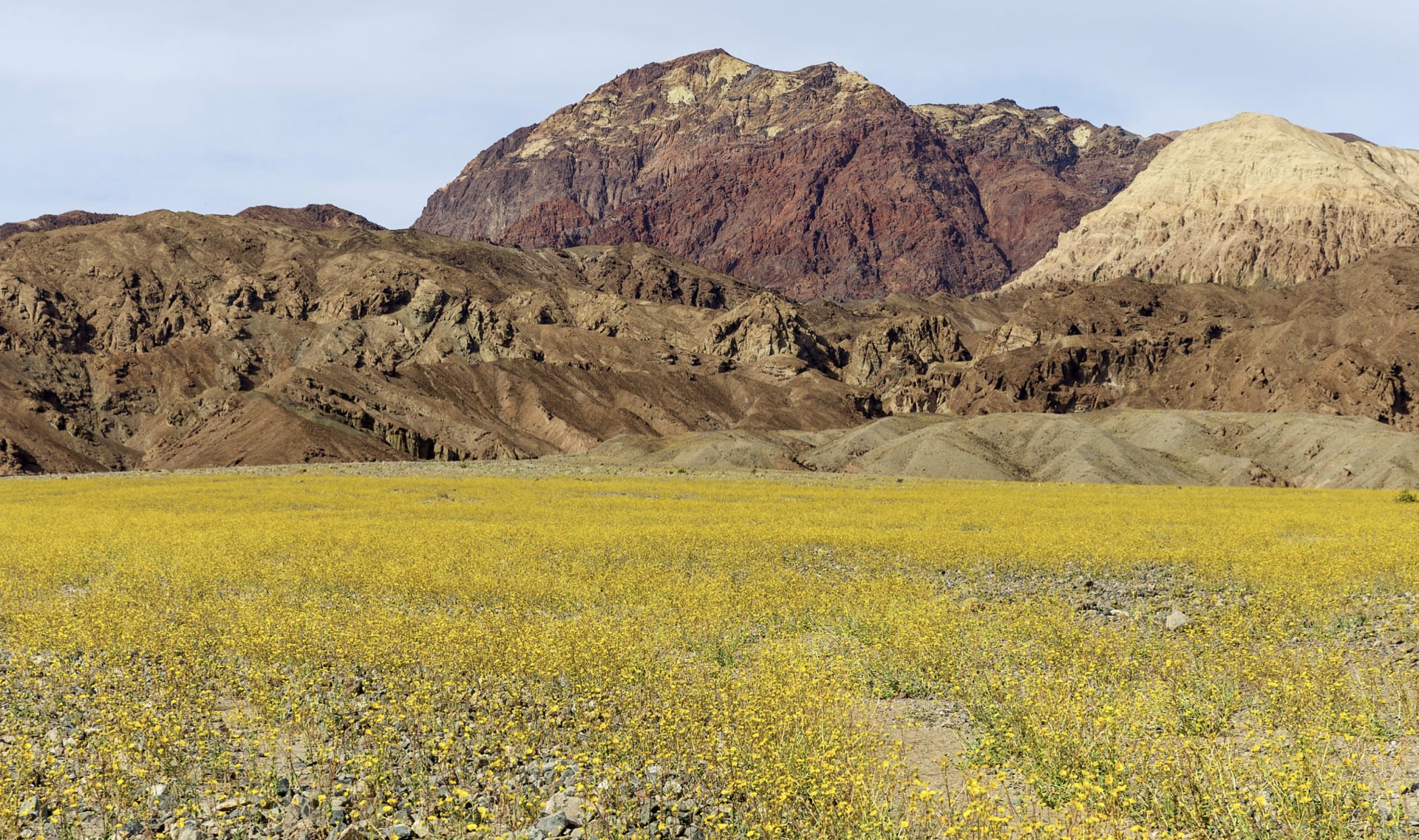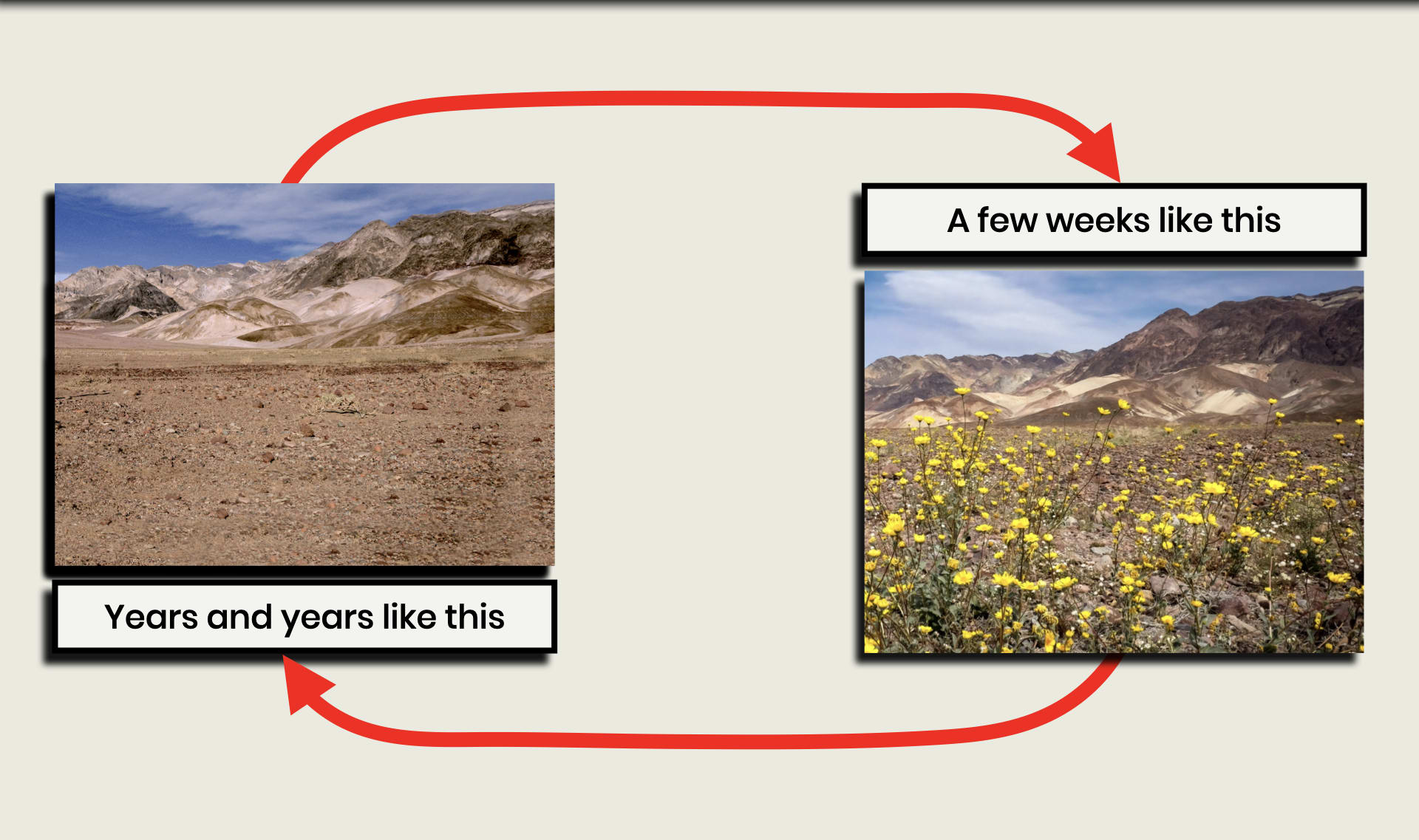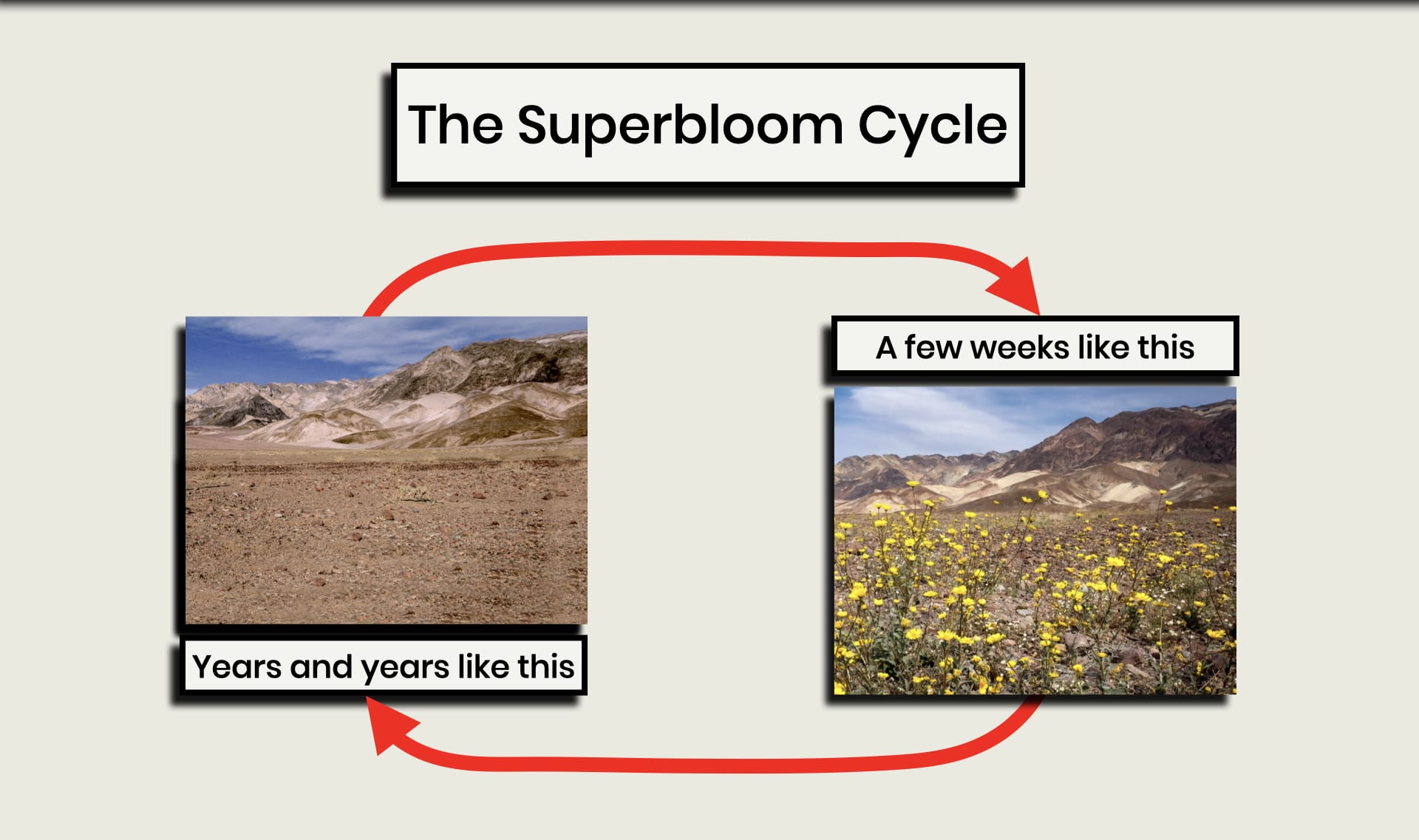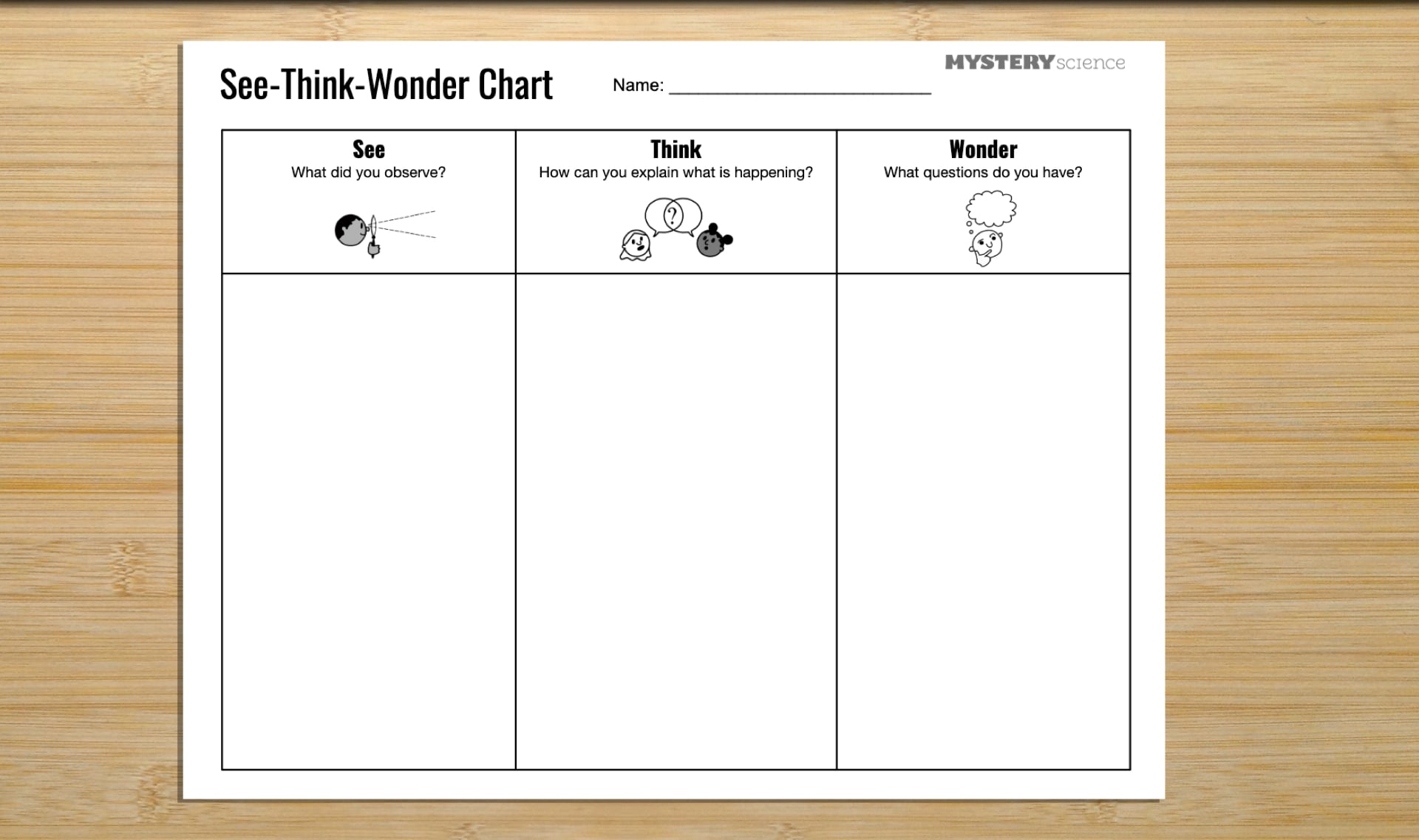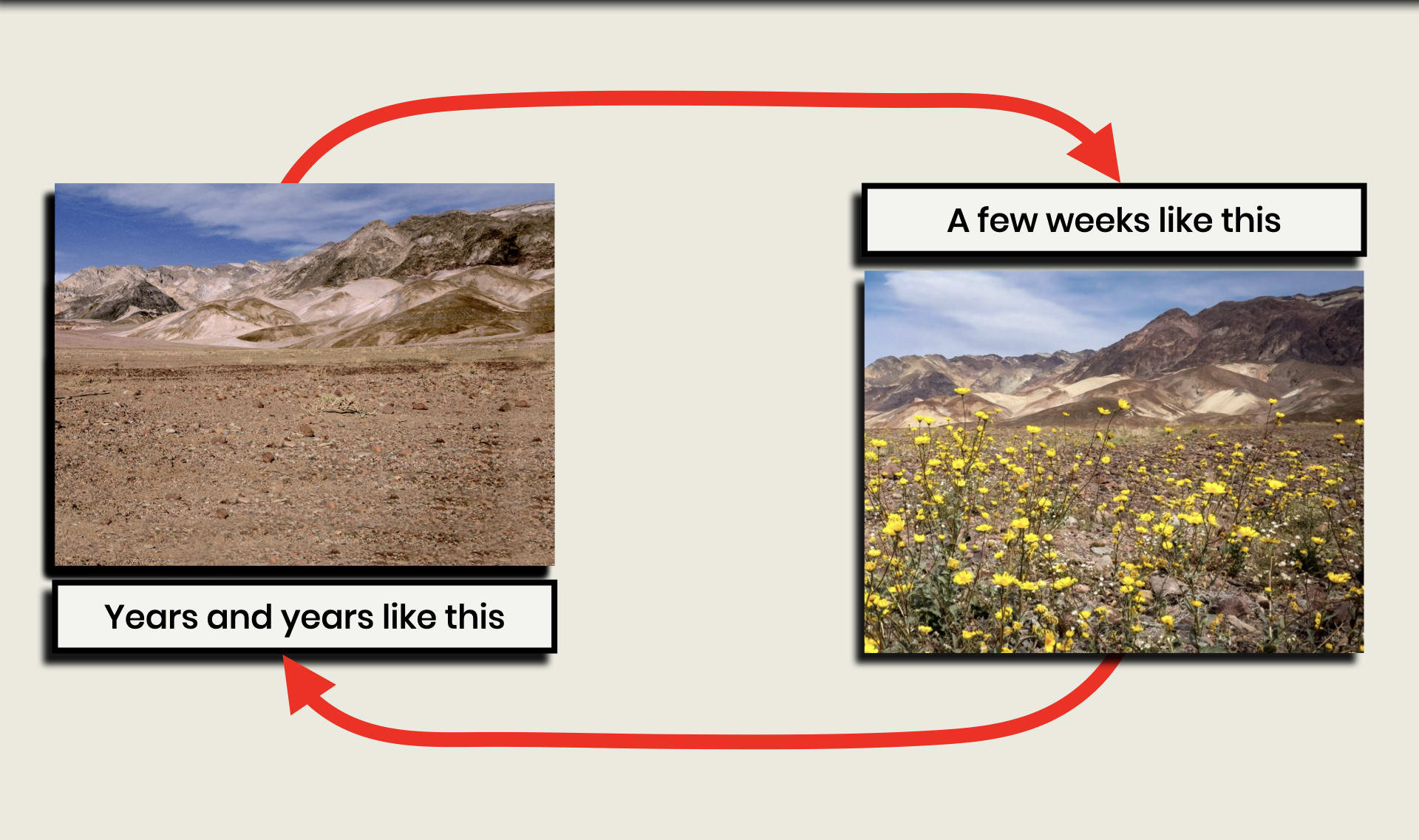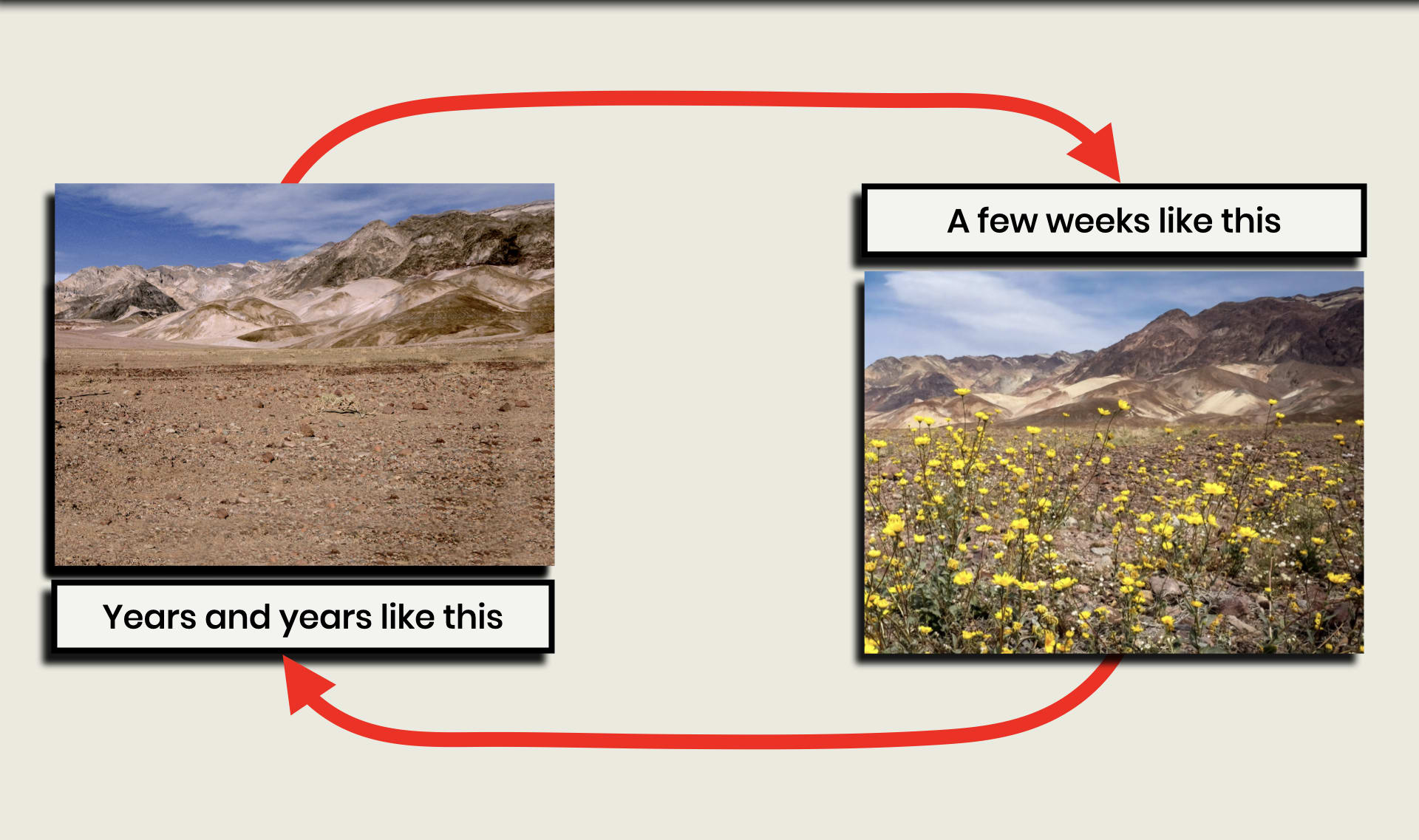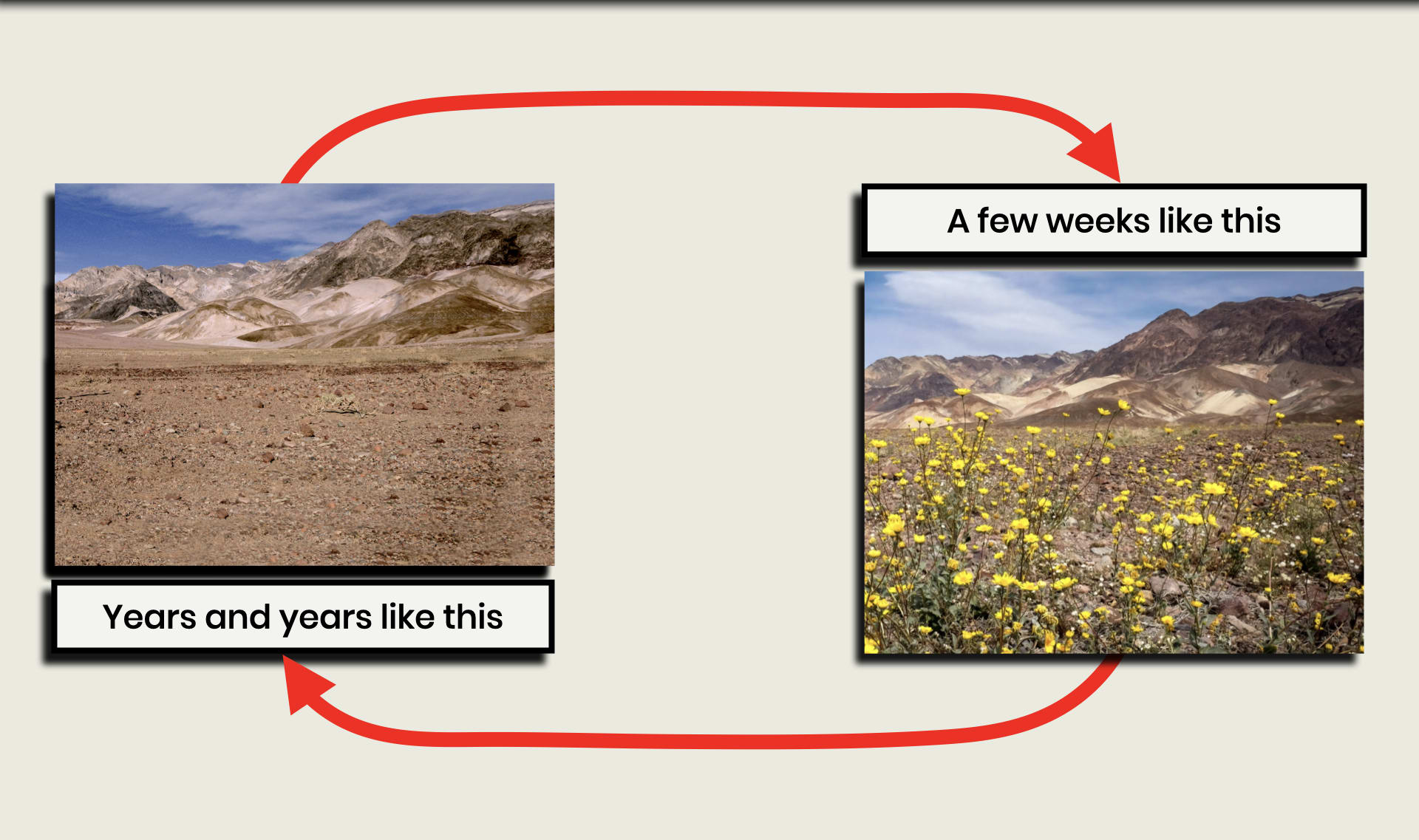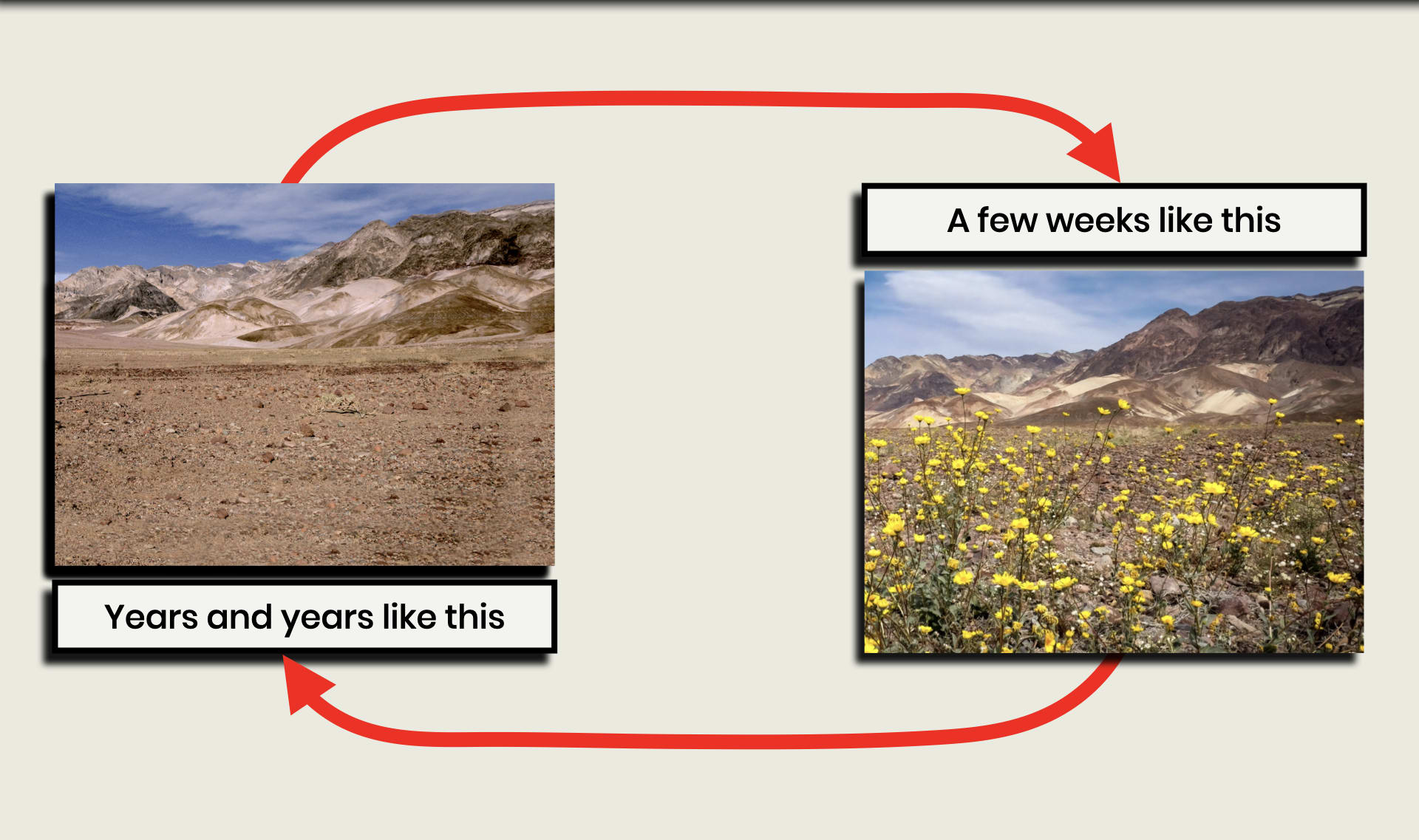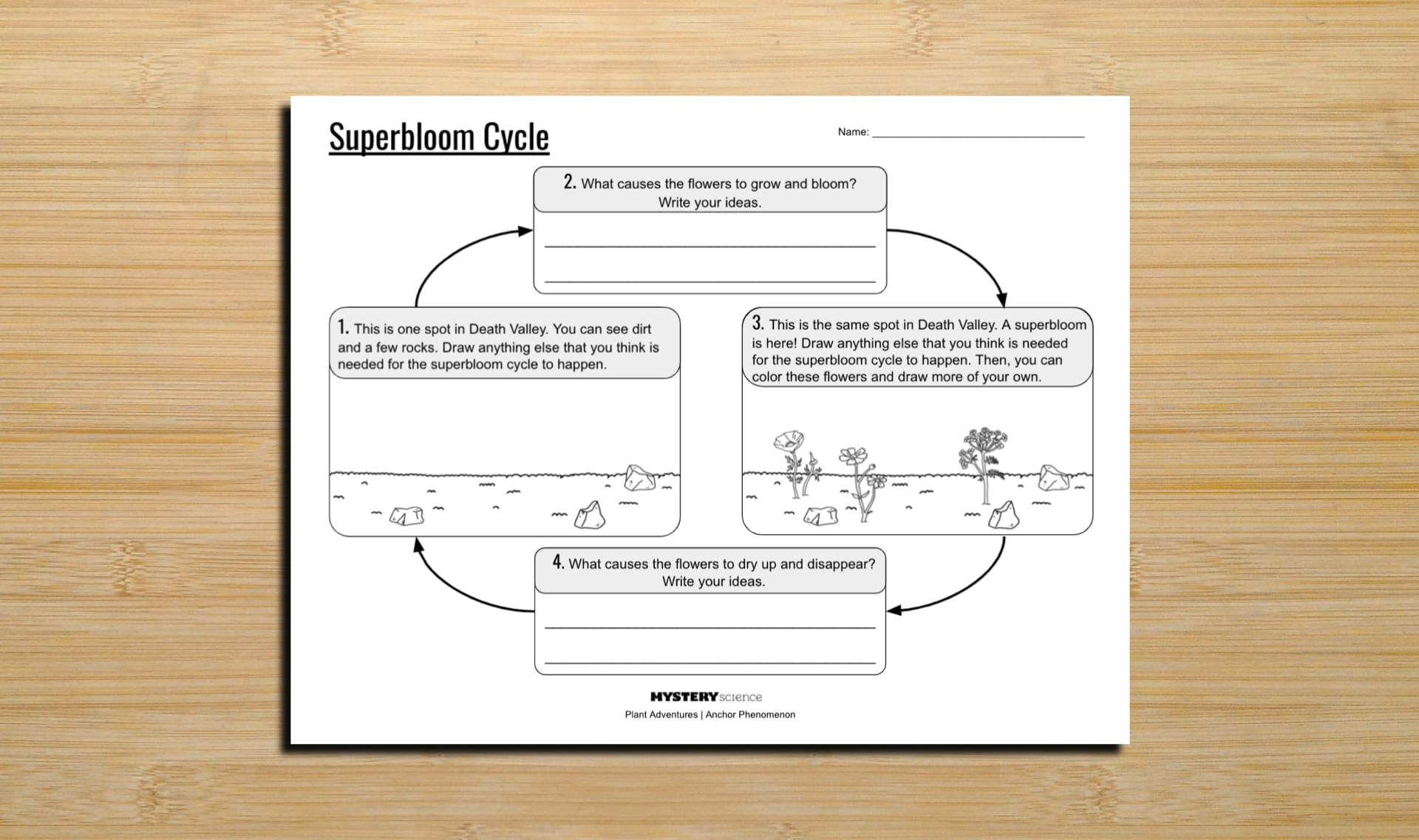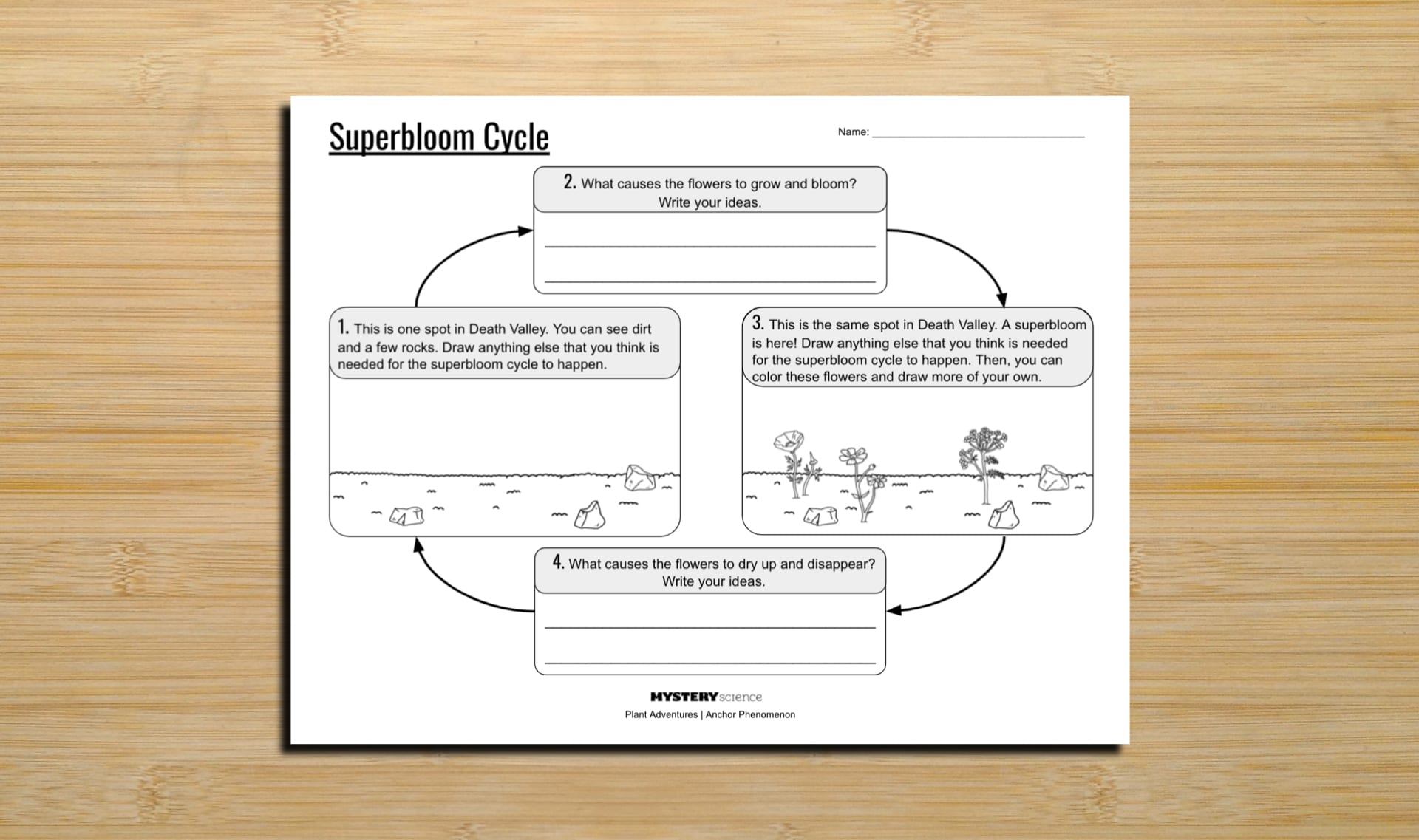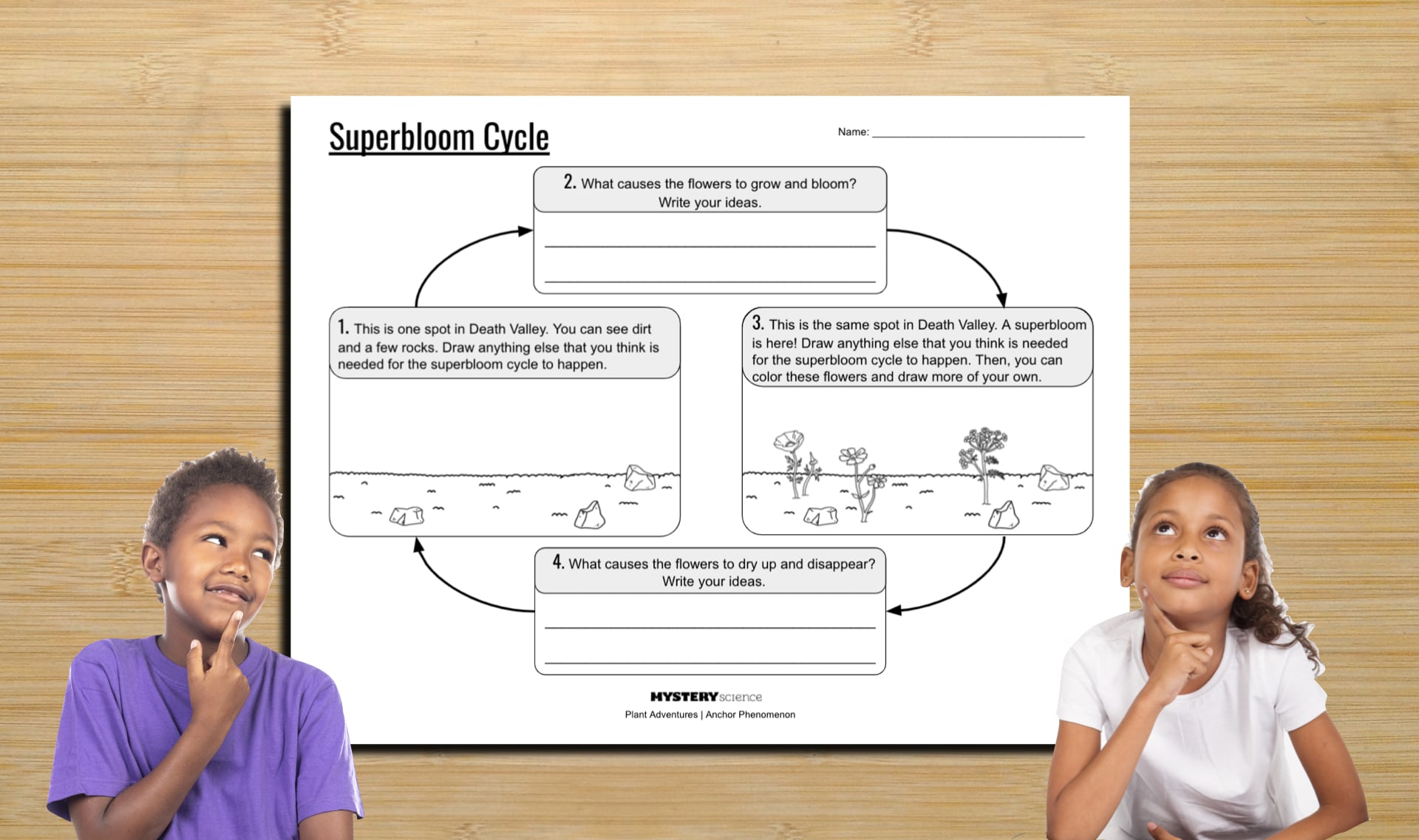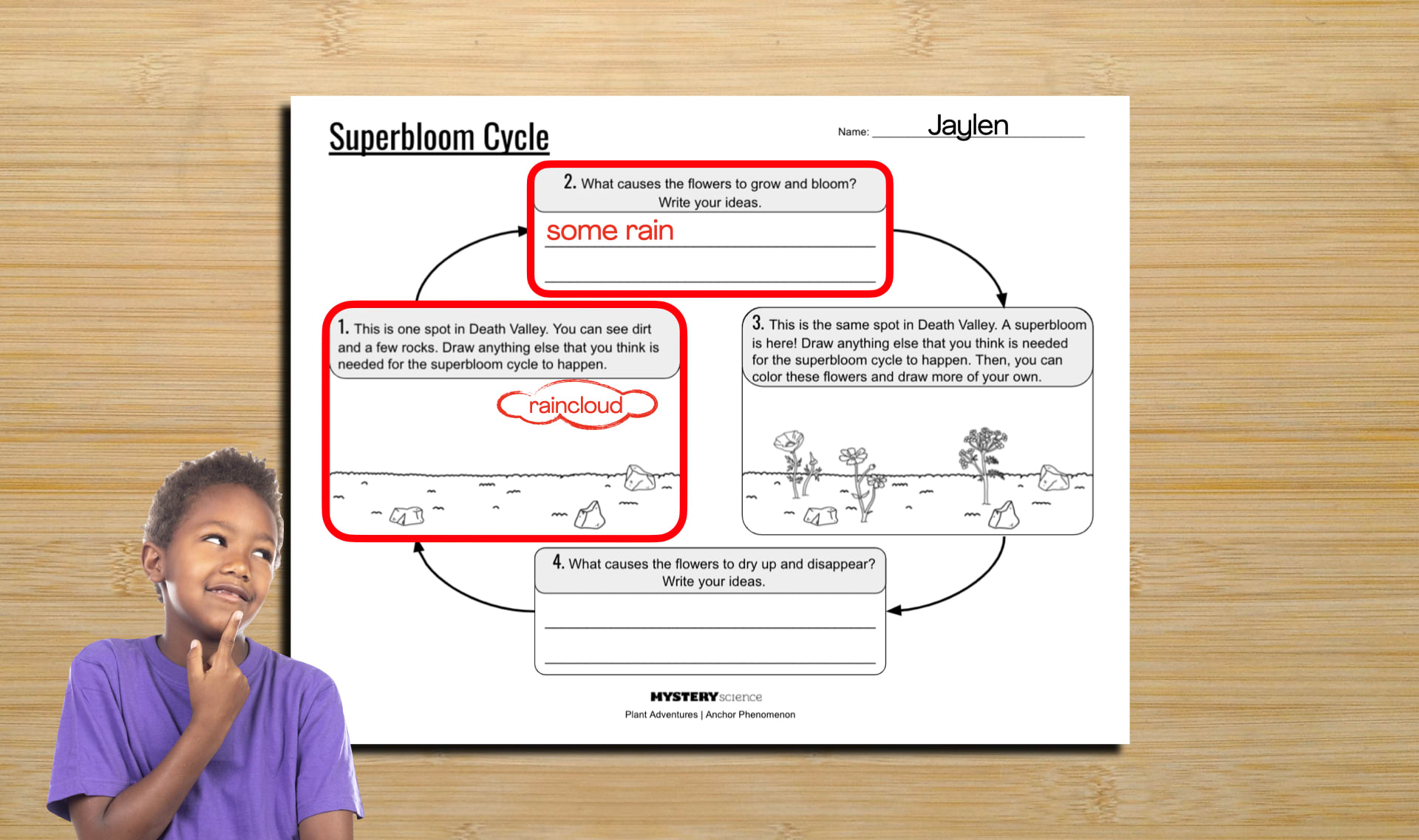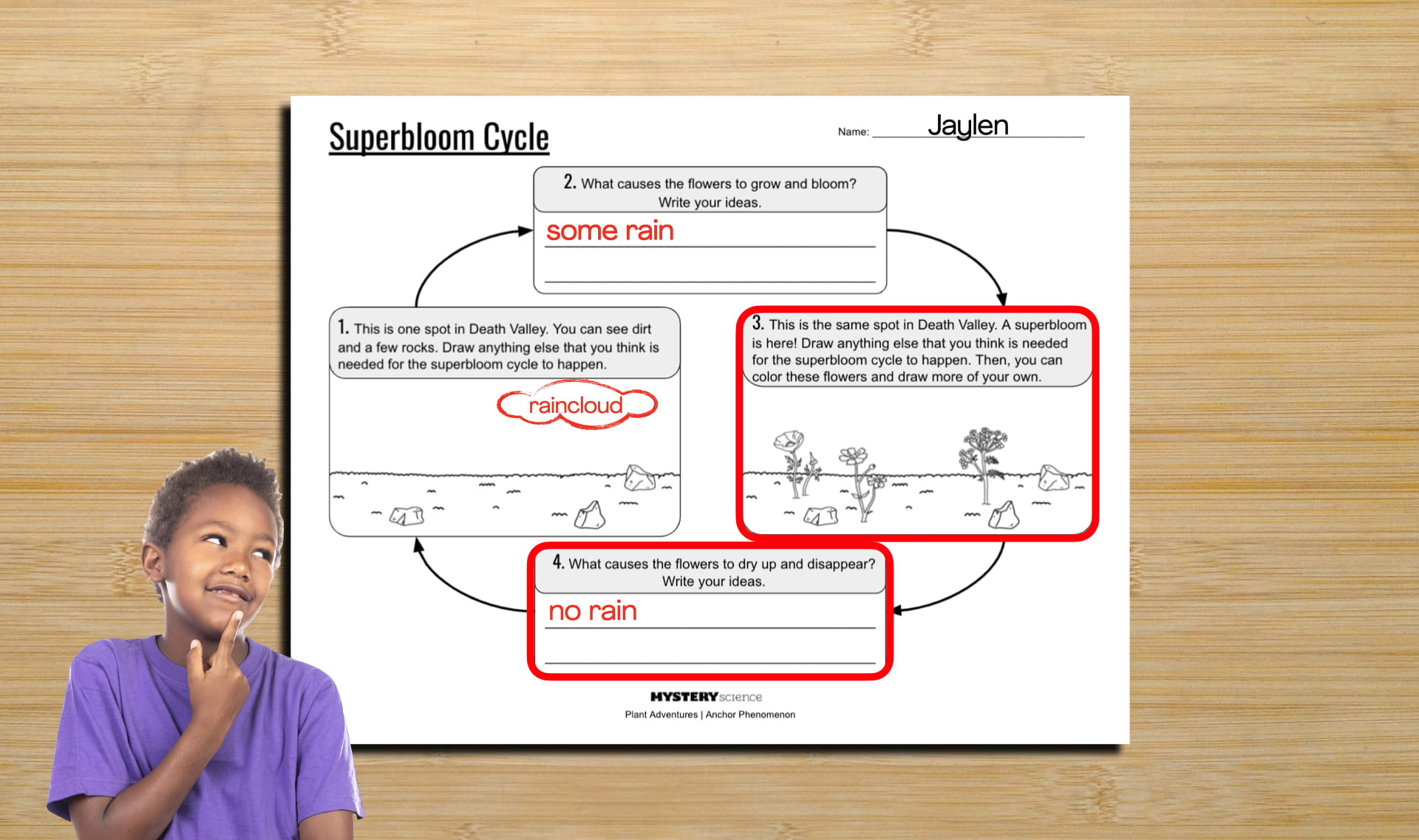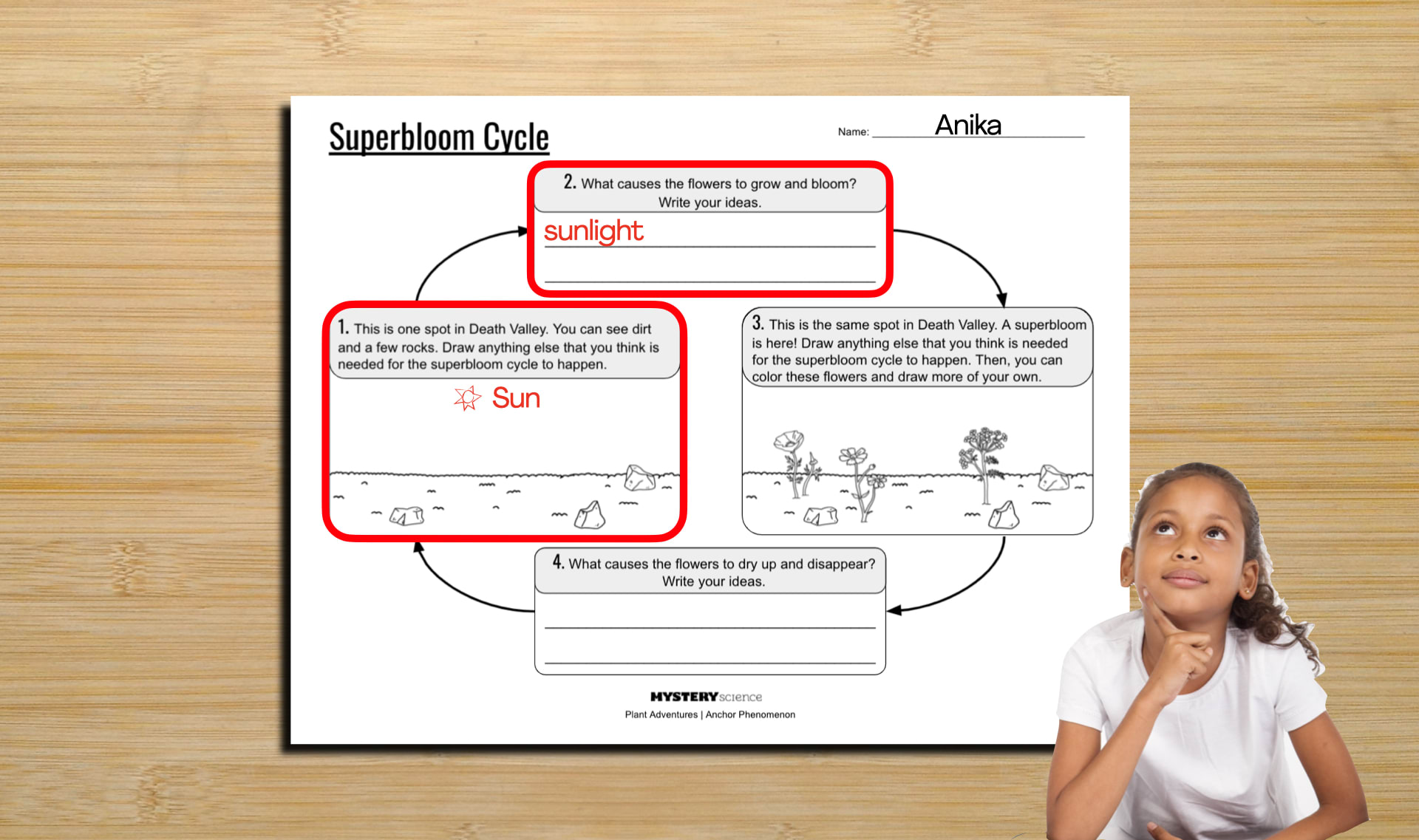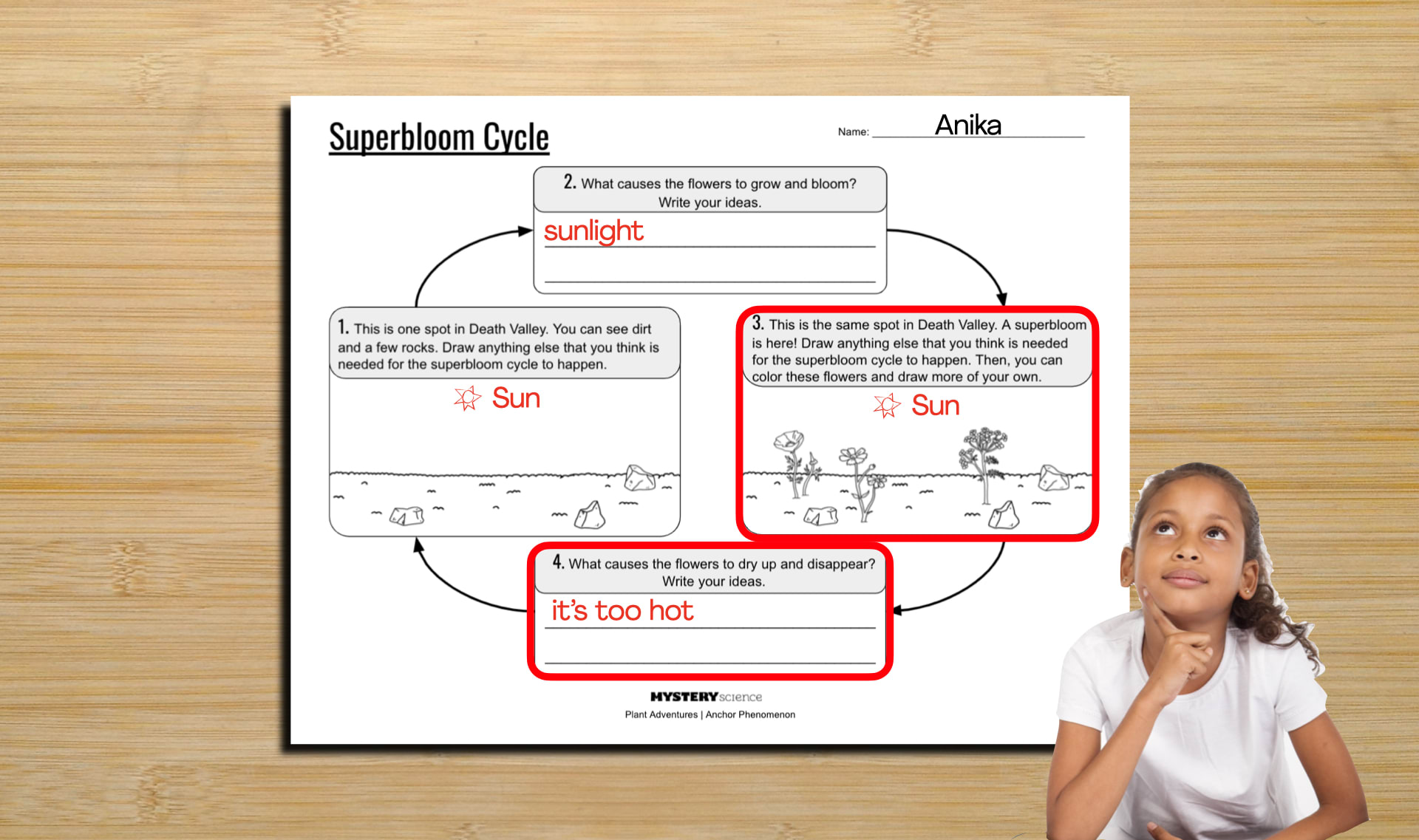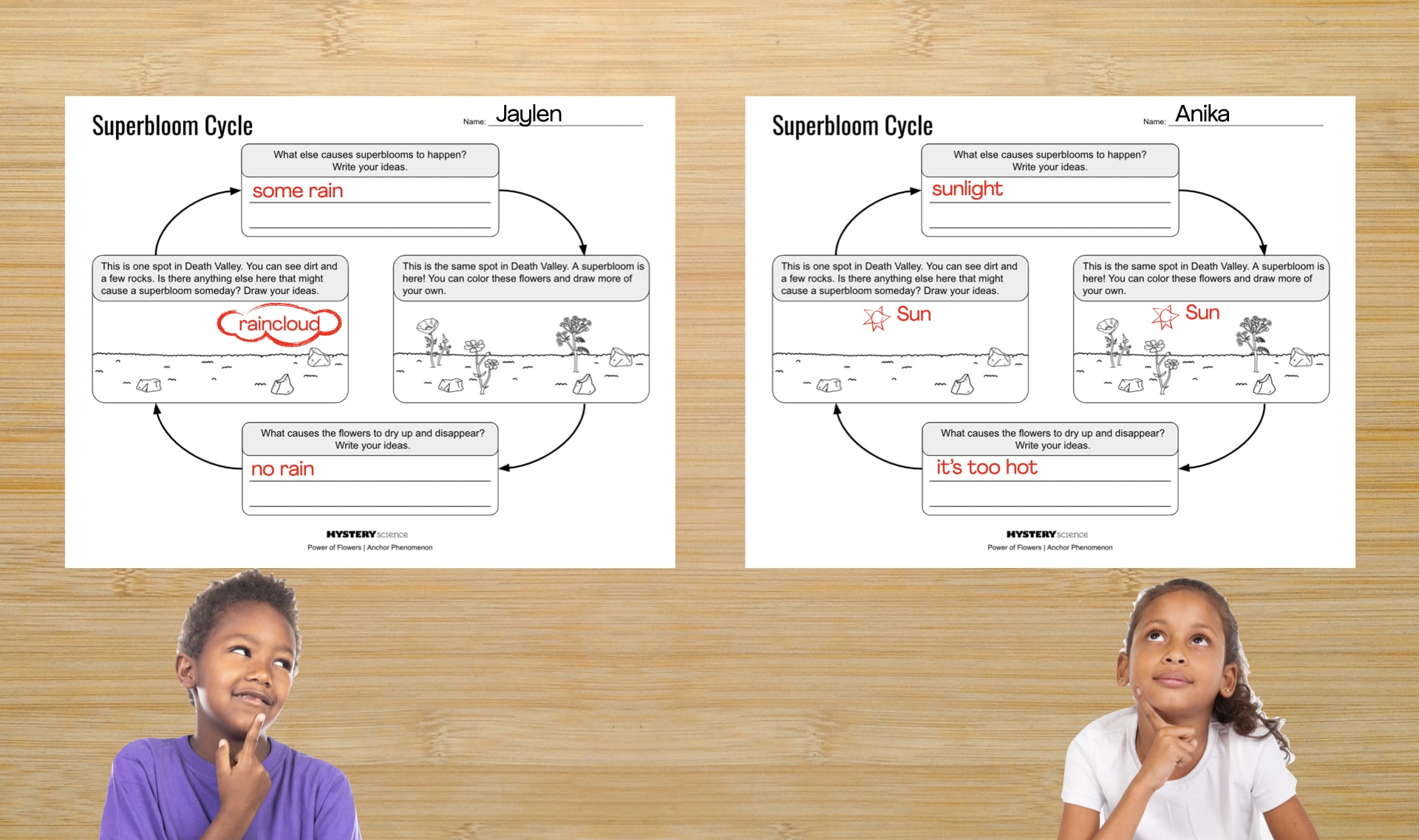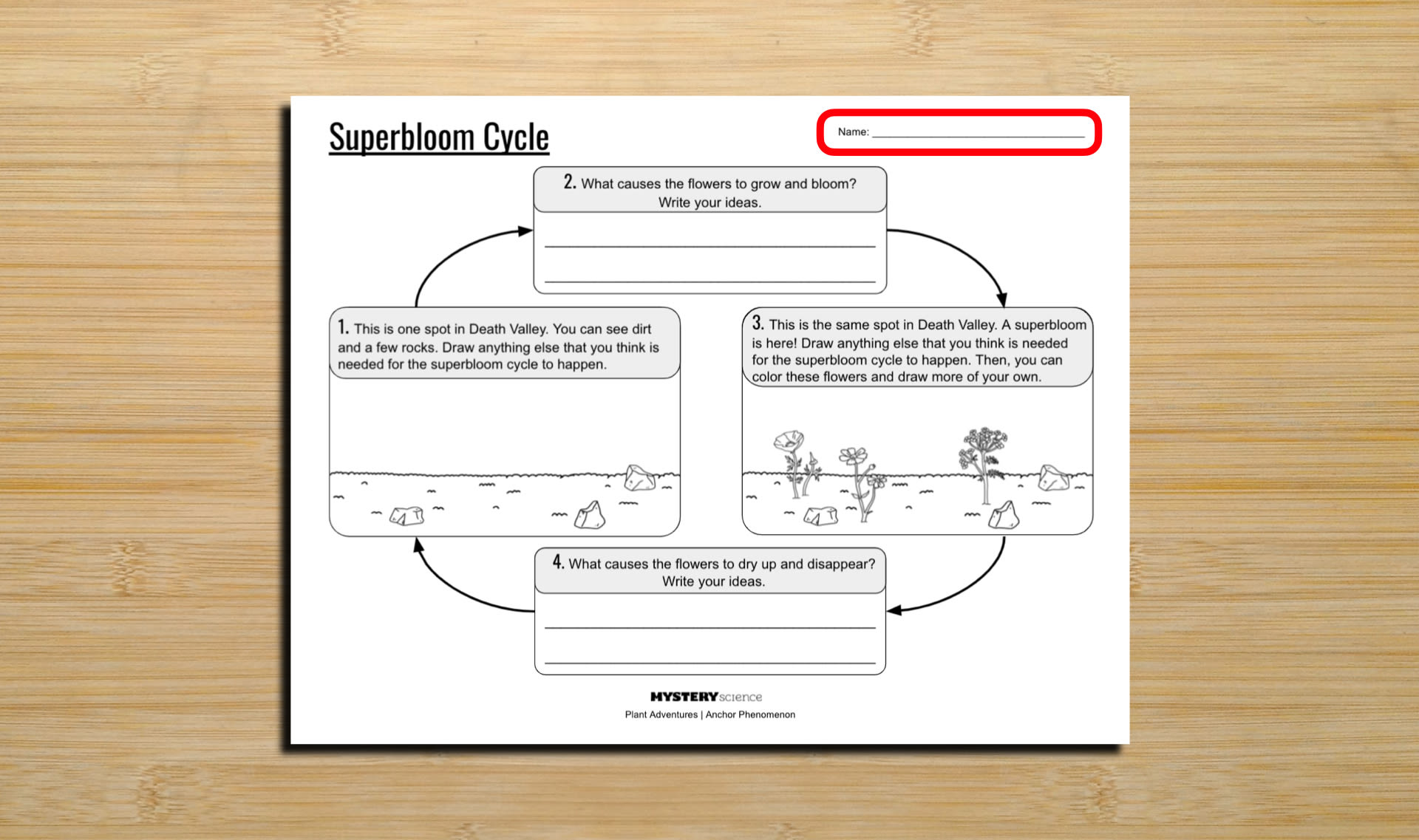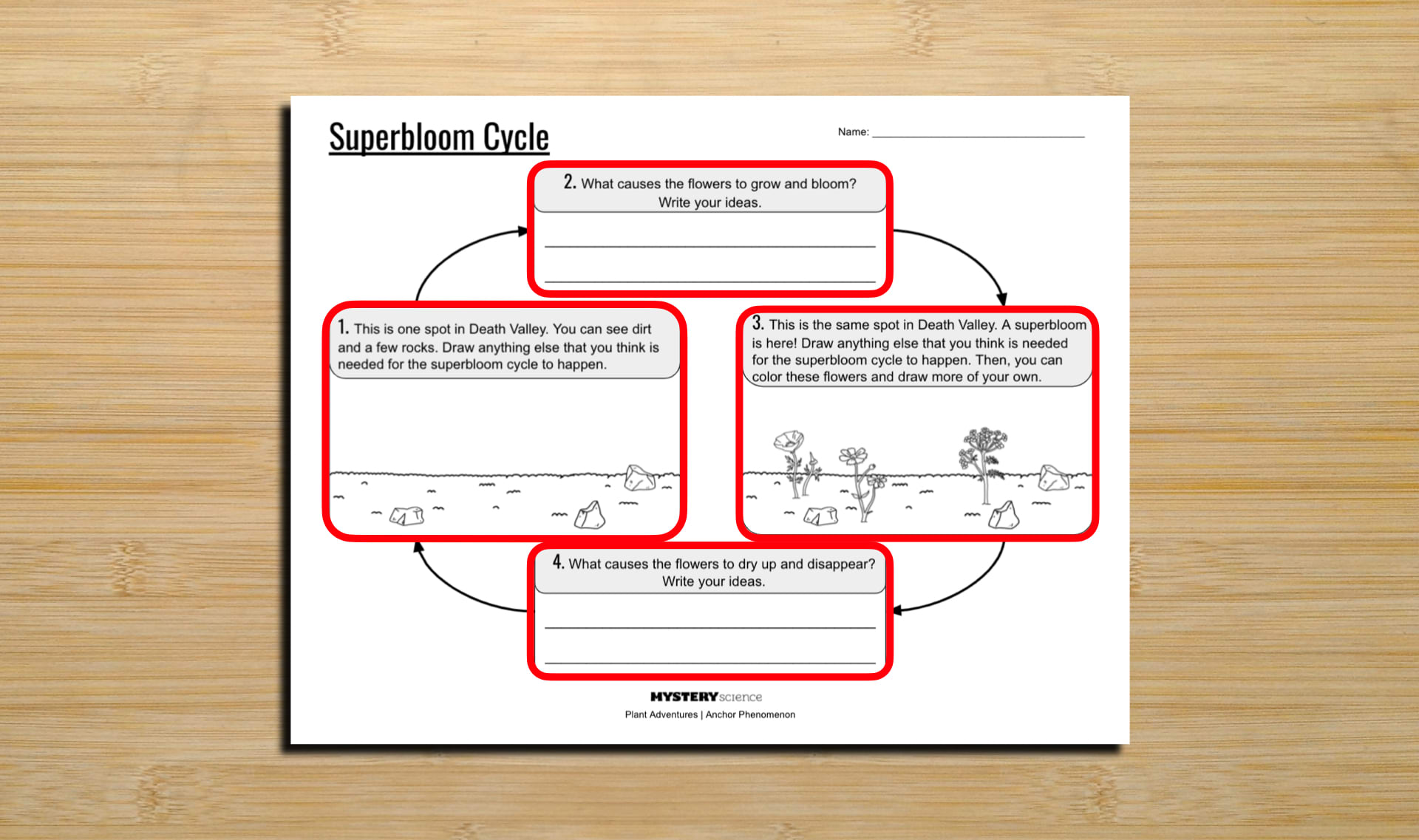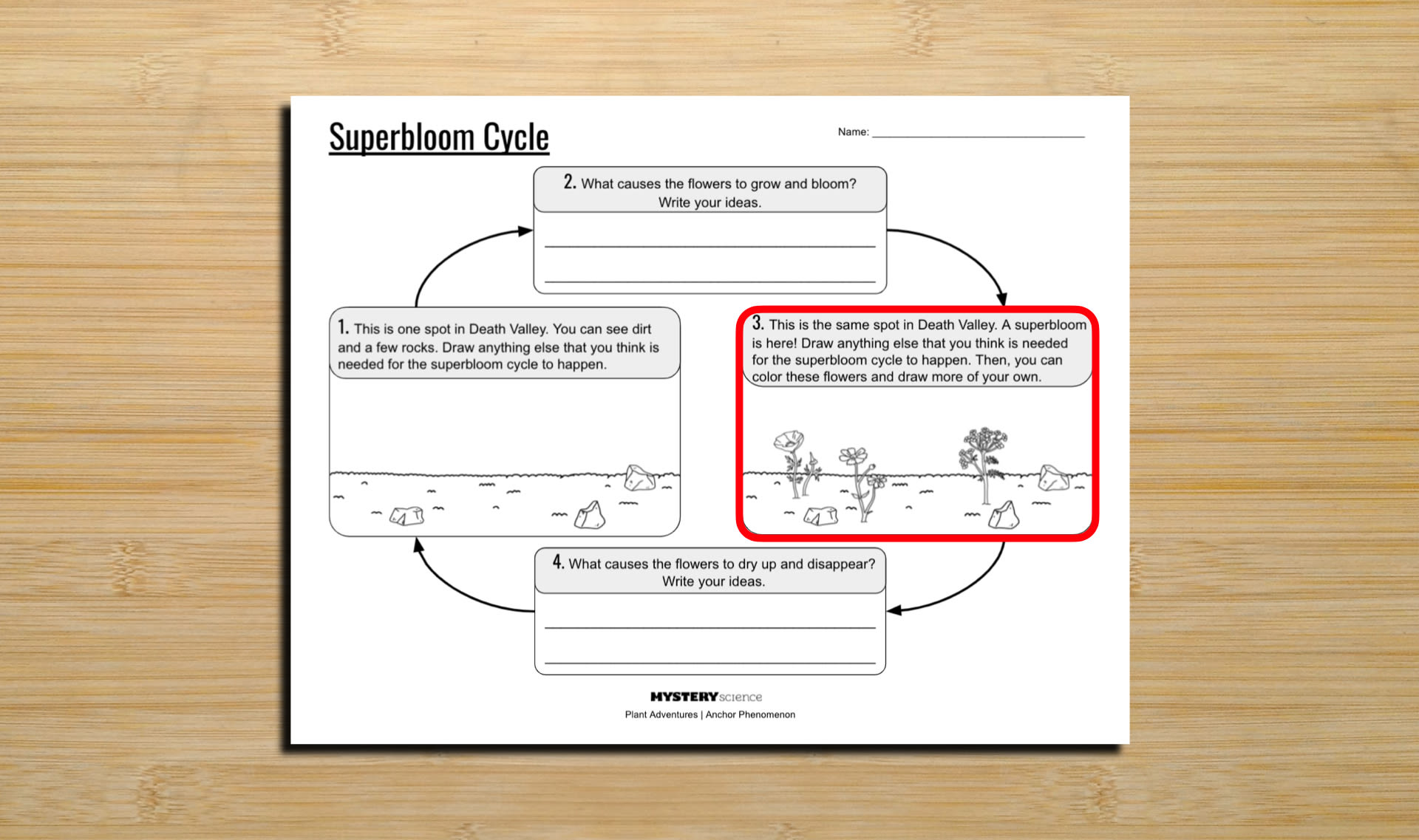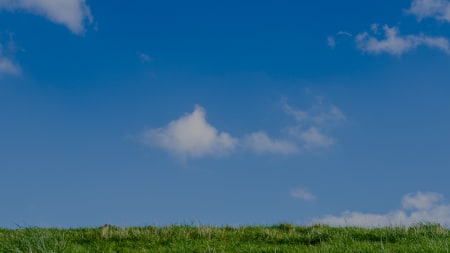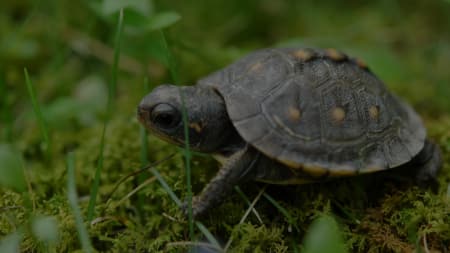Mystery Science respects the intellectual property rights of the owners of visual assets.
We make every effort to use images and videos under appropriate licenses from the owner or by
reaching out to the owner to get explicit permission. If you are the owner of a visual and
believe we are using it without permission, please
contact us—we will reply promptly and make
things right.
Other
A street sign in front of a vast desert landscape in Death Valley by
Fumanyc
Adorable Afro American child thinking isolated on a white background by
Gelpi
All illustrations by
Alex Kalomeris
Badwater Road in Death Valley National Park during a stormy day. by
Angel DiBilio
Blowing seeds off dandelion by
Gaz_za
Dandelion Seeds Up Close View by
Tracy Burroughs Brown
Death Valley National Park Super Bloom by
Partha Sarathi Laha
Death Valley National Park, California/USA - Devil's Golf Course on an extremely hot summer day. by
Helene Sauvageot
Death Valley National Park, Sign at the entrance of the Park by
Jerome LABOUYRIE
Death Valley during Super bloom with a close up of Yellow flowers in the foreground and colorful mountains in the background by
Cristina Guidi
Light rain sound by
Jeffreys2
Paddle Cactus - Panamint Springs by
David Brossard
Panoramic view of landscape at Death Valley National Park in California by
visualLEH
Road to scenic Artists Drive in Death Valley National Park, California,USA by
Alexander Demyanenko
Springtime 2005 by
National Park Service
Super bloom of desert gold sunflowers (Geraea canescens) near Furnace Creek in Death Valley National Park, California. by
Ovidiu Hrubaru
The view from Zabriskie Point in Death Valley National Park shows rugged hills formed by erosion by
CrackerClips Stock Media
Tiny sprout is growing on sand by
Rachata Teyparsit
Wildflowers in Death Valley, spectacular bloom by
https://enterprise.shutterstock.com/g/KrisClifford
Wind Desert No Sand Sound by
ProSoundEffects
dandelion field by
LeOPL
dead wildflower in dry cracked earth by
RhumbLine inc
https://www.flickr.com/photos/jeffhollettvancouverwa/25233388469/ by
Jeff Hollett
pile sand isolated on white background by
xpixel
young indian girl sitting on floor daydreaming by
michaeljung

